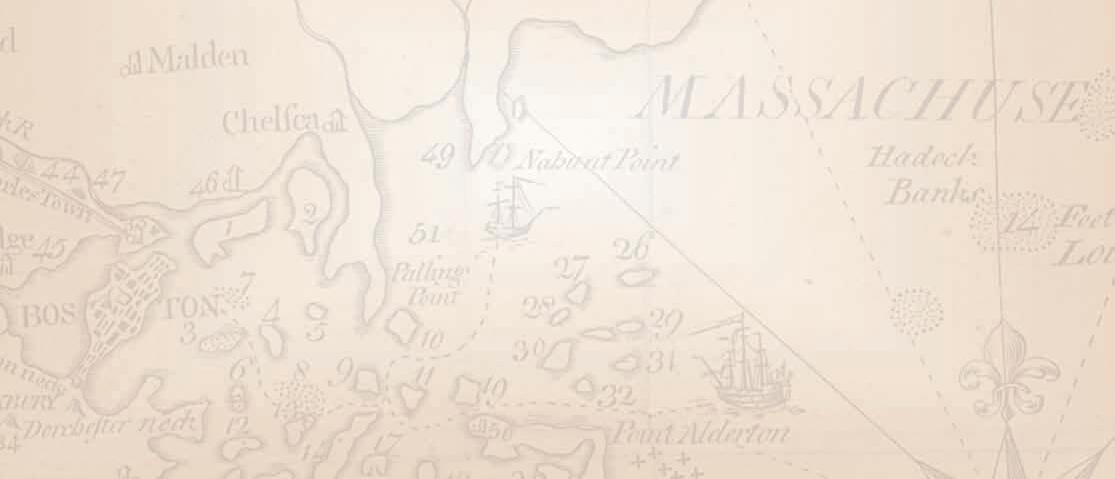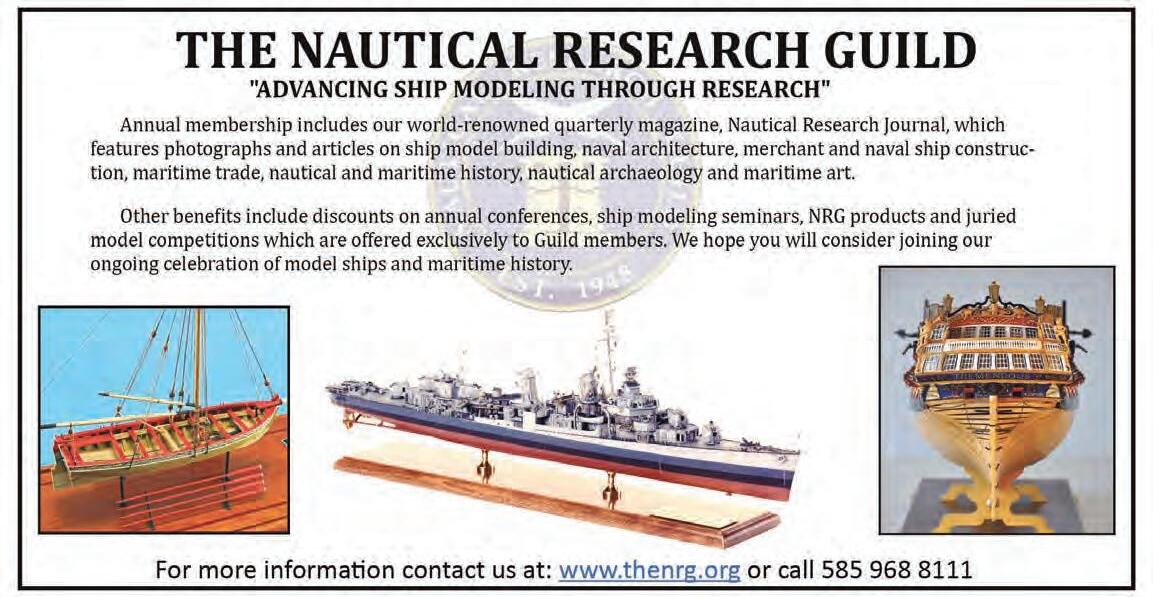$7.95 (about the cost of a Goombay Smash)


 WILLIAM H. ALBURY circa 2019
Spring 2023
WILLIAM H. ALBURY circa 2019
Spring 2023









$7.95 (about the cost of a Goombay Smash)


 WILLIAM H. ALBURY circa 2019
Spring 2023
WILLIAM H. ALBURY circa 2019
Spring 2023








What have I learned from sailing? A lot!
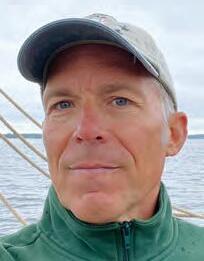
And although I sometimes struggle to retain these lessons, and have to relearn them occasionally, I decided to write some of them down. A new sailing season is beginning here in New England, and we can always hope to do better this time around... so here goes!
Do the recommended maintenance.
Don’t burn the locals.
Reef the minute you consider reefing.
Never put the schedule ahead of safety.
Check the forecast. Check the radar.
Pay everyone promptly, and be generous whenever possible.
Treat every guest like they’re going to write a review.
When a refund is in order, give it quickly and cheerfully.
Don’t cut corners.
Talk less and ask more questions.
Be proactive in avoiding collisions, no matter how badly the other boat is being handled.
Corollary — Don’t handle your boat badly.
Every now and then, look in the bilges.
Don’t employ people unless you can treat them with respect and courtesy.
Don’t play favorites.
Be on time — that way you’re not in a hurry.
Captain, crew, or counselor, people look up to you. Behave accordingly.
The less you swear, the more impactful it is when you do.
And lastly — don’t give advice if you’re not willing to follow it yourself :)
MARLINSPIKE MAGAZINE
Spring 2023 • Number 38
Michael Rutstein, Publisher

Marlinspike is published quarterly for $29 by Pennant Publications, Inc., 98 Washington Square #1 Salem, MA 01970

Cover Photo: Gabrielle Manni

Postmaster: send address changes to Marlinspike 98 Washington Square #1, Salem, MA 01970
Copyright 2023 by Pennant Publications, Inc. All rights reserved.
Phone (978) 594-6510
E-Mail Marlinspike1812@gmail.com
MarlinspikeMagazine.com

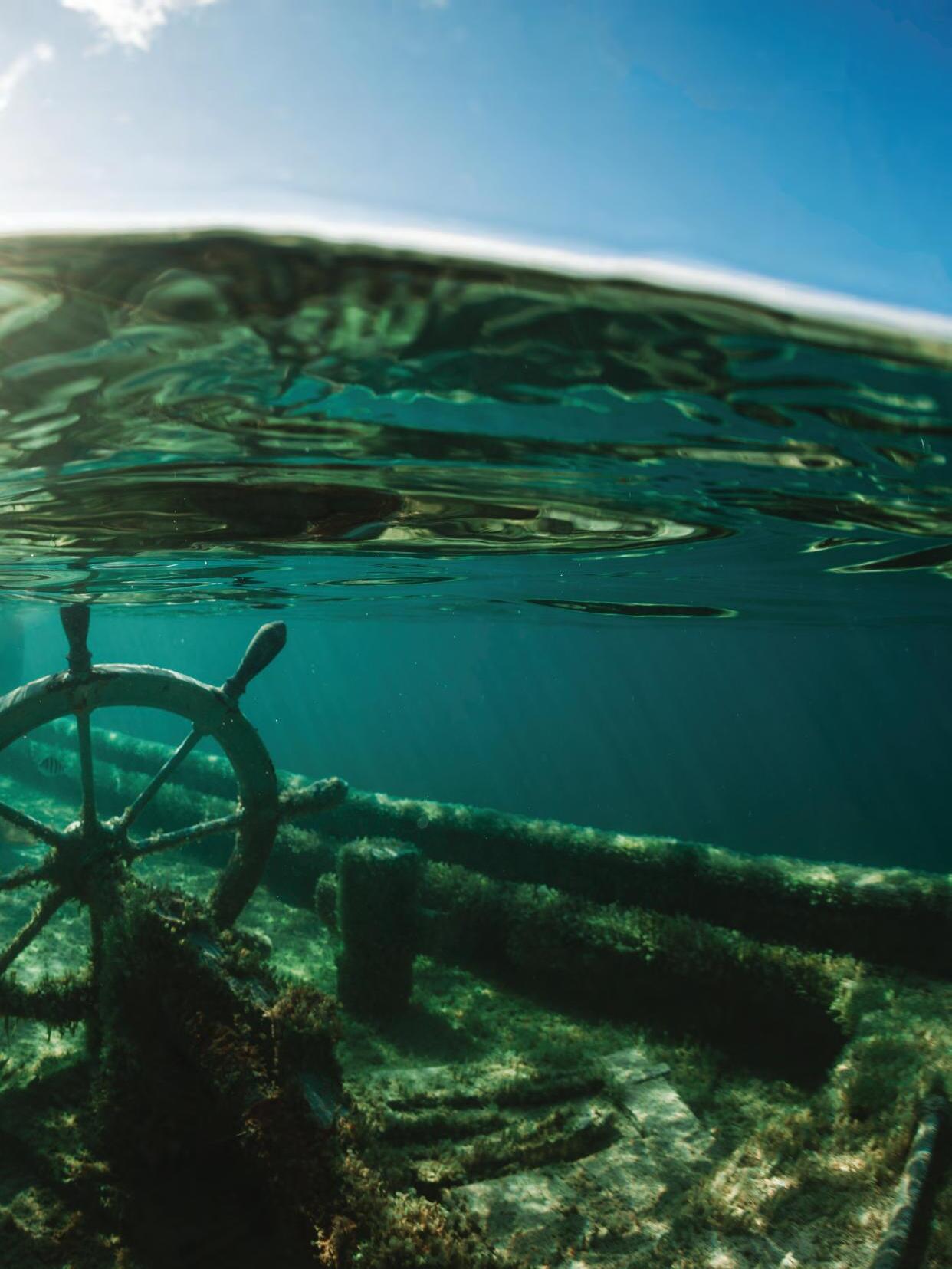
Down in the Abacos, there are fond hopes of restoring the WILLIAM ALBURY and building an ApprenticeShop-type program around her
After being sunk by Hurricane Dorian, the schooner is afloat in her home port of Man o’ War Cay, once a center of Bahamian boatbuilding
PHOTO: GABRIELLE MANNIOne beautiful morning this past winter, Marlinspike publisher Mike Rutstein sat down on Scott Weatherford’s porch overlooking Eastern Harbor on Man o’ War Cay with Scott, Jay Manni, Gabrielle Manni and Matt Sutphin. The topic was the mastless, gutted schooner William H. Albury, built just up the harbor. A light northerly breeze nudged the schooner around on her mooring, 50 yards away.
Marlinspike: I was on the boat yesterday, and she’s in rough shape. It’s gonna take a lot of work to get her back to where you want her to be. Why is this boat worth saving? What’s important about her?
Scott Weatherford: I guess it’s an emotional thing with me. The original builder, William Albury, was my adopted daddy, and I worked on her to some degree, in the early stages.
MS: When was that?
Scott: 1961, ‘62. I loved that schooner, loved it! Sailed it, and enjoyed always being involved with it.
MS: She has beautiful lines even now.
Scott: She’s a pretty boat. I hated to see it go down, you know. When the former owner, Joe Maggio, decided to get out of the charter business, we tried to buy it then, but it was way too much money. But I had a goal, a vision. I saw the wood boatbuilding [industry on Man o’ War Cay] disappearing fast, and I wanted to keep that heritage alive.
I’ve been involved with sailing for a lot of years, I was very passionate about it in the past, but since [Hurricane] Dorian [in 2019], I’ve kind of lost my passion, I guess. I would’ve got rid of it. I was advised by a lot of people just to get rid of it. But Jay and a couple other people encouraged me. “Let’s see what we can do.”
Well, we made a good start, we were starting to get it ready, and then COVID came along, and that’s where we stopped.
MS: Jay, why did you talk him out of getting rid of the boat? What’s important about the boat to you?
Jay Manni: Just the heritage of Man o’ War boatbuilding. Personally, I got on the William H. in 1976 and sailed from the US back to Man o’ War.
MS: What’s the vision for this boat? If you were able to restore it, what would you use it for?
Scott: My goal is to have it not just as a showboat, but to represent our heritage and use it for day sailing and to try to get our younger people involved with sailing again. Sailing has totally disappeared from the islands. Totally! We’ve done
a little bit of small-boat jazz, trying to get kids involved with sailing. Gabrielle was involved with that.
I’m nearing the end of my time, but I’ve still got some energy and little bit of life left. I hope that I could pass some of this on and teach our kids, and Giovanni’s interested in this. Couple of the other younger people have shown some interest in. I want to keep it up.
I’d like to see a bunch of young people get involved and I want somebody to take it over. I just want to get it going and encourage others to do it.
Jay: The Boy Scouts have been doing a program — Sea Base — here for 25 years now. The Albury was the original flagship for the Boy Scouts for a good many years. The Boy Scouts always had spring and summer programs here. I don’t know how much longer that’s going to last.
Scott: Joe Maggio started the program here, and then they just kept on getting more boats. Originally it was all traditional, wood boats, sailboats.
MS: Tell me about the history of the William H. Albury.
Scott: The boat was built in the William Albury shipyard for Fred Whittier…
Jay: You just featured one of Fred’s boats on your Facebook page! In the “Name that Boat” feature. Fred Whittier’s Lazy Jack is still taking guests out in Maine. Fred built that boat in 1947 in his own yard, which was in Ipswich, Massachusetts. The Whittier and Low Boatyard.
Scott: Fred was well known here in the islands. He contracted with William Albury to build a schooner here. And he worked right along with them, in the lofting process.
MS: What was the boat to be used for?
Scott: Well, with Lazy Jack, he used to do some chartering out of Nassau. Then he married a lady from Marsh Harbor, but they liked Abaco, so they stayed up here. After he built the Albury, I don’t know that he did any chartering… the first name of the boat was not William H. Albury, by the way, it was Esperanto
Anyway, I don’t know when, but Fred sold it to a group of people who renamed it the Grand Turk. They took it down to the Turks and Caicos and did charters. Then they wound up bringing it back to Florida. It sat for a year or two, if I remember right. And then Joe bought the boat…
Jay: Bill Payne might have been the guy that bought the boat from Fred Whittier.
Scott: And Joe Maggio renamed the boat and brought it over here and had it refitted. He did a lot of work on it in
Florida as well.
MS: So this would be the early ‘70s by now?
Scott: Yeah. Getting ready to go to the Tall Ships. So Joe decided he wanted to do that. He represented the Bahamas.
MS: In 1976, for America’s bicentennial. The big event in New York!
Scott: So the boat went, and did promotional stuff along the way for The Bahamas.
MS: Tell me about Joe.
Scott: Joe was originally from somewhere in Southern New Jersey…
Jay: Northfield.
MS: A guy from New Jersey represented the Bahamas?
Scott: He had moved to Florida by this time, doing charters out of Miami. He came over here and, you know, he spent the rest of his life here, in this area of the Bahamas. He was very involved with the Boy Scout program, as Jay men-
tioned. He originally brought the Boy Scouts into this area for the program. He had worked in a similar program — somewhere in the Florida Keys, wasn’t it?
Jay: The Boy Scouts do a summer sailing program out of the Keys also. And I believe even in the Virgin Islands.

MS: How long were those Boy Scout programs aboard the Albury?
Scott: They were on the boat for a week. Twelve to fourteen kids. It was an adventure program. They slept on deck, did their own cooking.
MS: OK. We’re into the 1980s now. The boat’s based here, on Man o’ War Cay, running private charters and Boy Scout programs. And then what happens?
Scott: Joe got out of the program. Then he passed away and that was the end of his program. But before that, he had sold the boat to some people from Jamaica. They wanted her for evening sails at a resort, a booze cruise. From what I’ve heard, they didn’t take very good care of it. It went through a hurricane. Didn’t they lose one of the masts?
Jay: The mainmast was rotten and they cut it off with a chainsaw.
Scott: Anyway, a local guy, David Wright, wanted the boat. He wound up going to Jamaica, thought he was gonna buy the boat, but between the price and the condition of the boat, they couldn’t reach an agreement. The story that David tells me is that after he went down again and negotiated for a second year, the guy finally said, “If you’ll pay my bar bill, you can have the boat.”
[Laughs]
David then went to Jamaica for a few months, got the boat ready with just the one spar, the engine was running, and they sailed it back from Montego Bay to Man o’ War. His goal was to restore the ship. He tried for about two years, I guess, but he couldn’t get it going. Then along came Dorian.
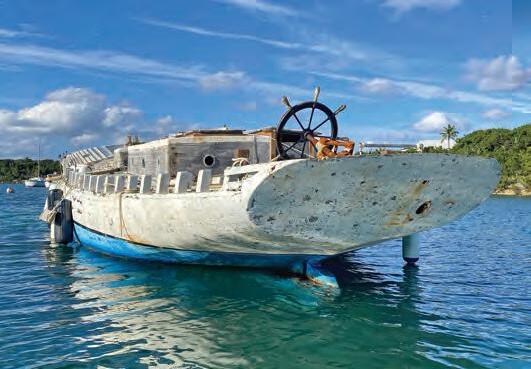
MS: When David Wright brought the schooner back from in Jamaica, was that when the boat got glassed over?

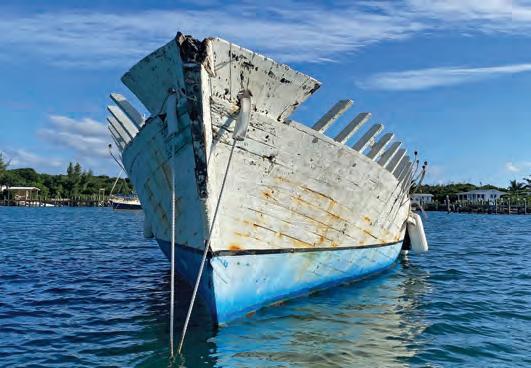
Scott: You know… [sighs] it was just a money thing. He really wasn’t doing it right. He was just trying to smooth it over and make it look pretty, but not really fixing anything. David’s parents were from Massachusetts. They had a home here for a lot of years, and David was one of the kids. He wanted to fix up the boat, but he didn’t have the resources.
MS: So what happened when Dorian hit?
Scott: She broke away from the mooring — or took the mooring with her, I’m not sure — but she went against the rocks a little bit, not a whole lot. And then she just sank, which saved her probably.
MS: How long was she on the bottom?
Scott: A couple months. David raised it up, got her floating. She had a lot of patches on the bottom, but they were able to use bladder tanks to get her up.
Still, David got discouraged. He came to me and he said, “Scott, I can’t do it. Why don’t you take the boat?” I said, “No, David, I can’t.” I’d lost every boat I had and I didn’t have a house. I said, “I can’t get involved with a boat. That’s the last thing I need.” Well…
MS: What changed your mind?
Scott: I kept thinking about it. [Laughs] I guess I talked to Jay about it — whether it was worthwhile to try to save it. And what would we do if we could. And so David sold the boat to me for a dollar. [Laughs] We started the process of restoration. We totally gutted the boat, as you can see. We were working on her right here. And then COVID come along and that’s where we stopped. I had bought all the mahogany and the fasteners to redo the bulwarks, the decks…
MS: What happened to the mahogany and the fasteners?
Scott: I still have all of that stuff. It sank again a couple months ago and I told Jay, I’m debating whether we should just get rid of it.
MS: Jay, did you talk him out of it again? Oh, you’re really on the hook now. You got do something.
Scott: Well, wasn’t no fault of the boat’s. We had had a lot of rain for a couple weeks and we didn’t get it pumped out. [Laughs]
Jay: Our fault. She went down by the stern…
Scott: So we brought the barge alongside her and put two straps underneath her and lifted it gently till we got the deck outta the water and threw three, four pumps on the deck… She was probably better off for the salt water!

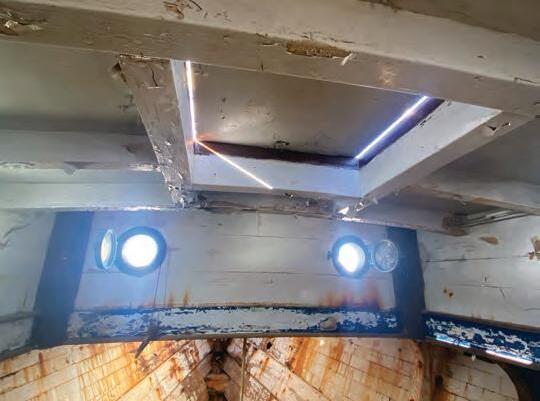
MS: What do you need to get working again? From what I understand, she’s just sitting on her mooring, getting pumped out on a regular basis, but no work is going on.
Scott: We need people to work on her. Somebody that knows how to fix wooden boats.
MS: There’s some very knowledgeable people on this island, I can see that already.
Scott: Most of the older carpenters, of course, are no longer around. There’s a couple younger guys who know their stuff, but they’re busy working in the yards here and we don’t have the money to pay those wages. Honestly, I’m not sure whether we can find the people on Man o’ War to do it, even if we had the money, I told David Wright before Dorian, when he was working on it, “David, find somebody who can help you and take the boat to Maine, get the boat redone, because the help isn’t here.” But he said no, he wanted to do it here. I understand that.
MS: There are shipwrights in Maine who would love to be here right now instead of up there!
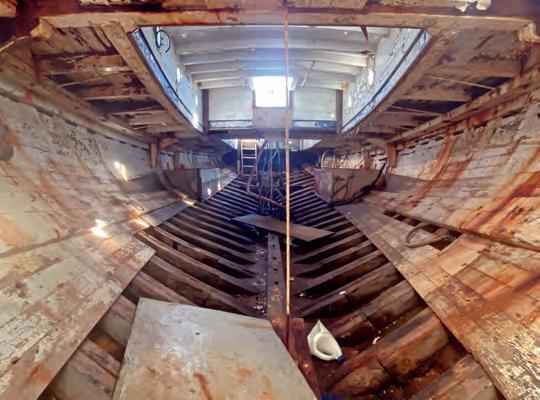
Scott: That’s one of the ideas we’ve been talking about.
Matt Sutphin: You might know my uncle, Lance Lee, of the ApprenticeShop. Lance’s family built a house here in
1948. He was here a lot as a kid. Lance spent a lot of time in that boatyard. It really was the incubator for what he ended up doing in life, which is providing life experience through building boats.
We talked to Lance about getting some apprentices down here and getting a program going. But it wasn’t quite the right time. All the stars weren’t lined up. I suggested it again to him, just last week, that he might revive that thought.
MS: There must be young men in the Bahamas that you could bring in to be apprentices. Why import apprentices from the US?
Matt: Well, this is the thought that we’ve all kicked around. Lance hopefully will help us establish winter programs, say two or three months, get an apprentice shop guy that wants to be in the warm weather in the winter. Make it maybe a short program the first year. Bring two or three people down here, and maybe that workforce could be supplemented by those around here that are willing to be helpful.
Hopefully it will go well enough so that the next year will be two months, then possibly it’ll end up three months. I don’t know. But anyway, the idea is to get the workforce, import the workforce.
The thought is that the Albury needs the most work and time, but there are some other boats that we’re putting into the picture. The Traveler that I’m bringing over here [she arrived at Man o’ War in January], Scott remembers from being built in 1948. She’s in Florida. She has a storied history. She has the distinction of crossing the Gulf Stream 80 times in two, three and a half years. She was taking people to Bimini and back. They’d go to sleep down below, wake up on Cat Cay,
and then do whatever they do for a day or two and then go back to Miami.
They had all kinds of big guys, Kennedy and Burl Ives and people like that, running ‘em back and forth. It was, it was really the first, I think, charter sailboat in Florida.
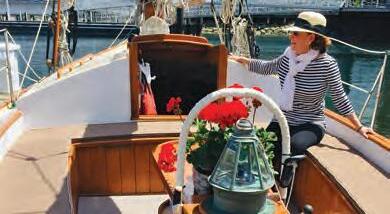

Scott: Traveler’s original rig was a Marconi rig, but beautiful. She’s now gaff rigged.
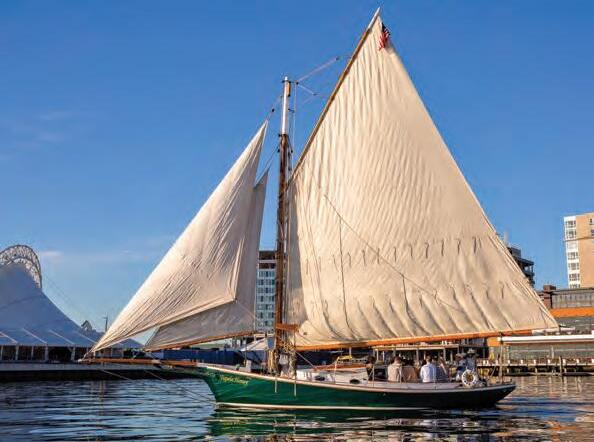
Jay: But there’s thing called the Jones Act, right? A foreign-built hull can’t charter in the United States. You have to touch a foreign port if you want to charter. How they got around Traveler having been built here is, they got her over to Florida without the keel. They laid the keel in Florida! But she was probably 80% built here.
MS: That’s one way to enhance that ApprenticeShop opportunity, if the apprentices are sailing as well as building.
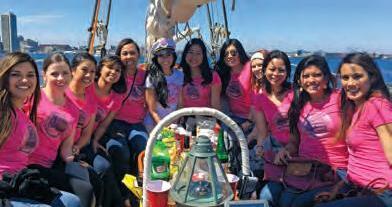
Jay: That’s a given. We would make sure that they had something to enjoy. They’re not here just to work. They’ve gotta enjoy being here enough to want to come back.
MS: The boats have have to be sailed and maintained. No point in fixing up a boat if it’s going to sit at a dock! But getting back to the Albury… there’s a number of boatyards still on the island, and I assume you could access some of the heavy equipment that the apprentices would need if they’re
gonna replace frames and so on.
Matt: We could work that out. The equipment is the least of our problems. There’s a railway. This property has a workshop. I’m sure that’s not a problem.
MS: But who’s going to take charge of this program and set it up?
Scott: Well, Jay and me and Gabrielle are the only ones that have been involved since day one trying to put this program together. There are other people who are interested, but I’m talking about day-to-day stuff.
MS: You’d think that people would be banging your door down to spend their winters on Man o’ War Cay fixing up the William H. Albury
Matt: I think Lance can find the people. He started more than one ApprenticeShop, you know — he’s on his third. He’s retired now, sure. But he started that and he started The Atlantic Challenge, which is a big deal now, 18 countries.
So he has resources. He can find the bodies that want to be here. We’re confident about that. It’s a matter of just getting a mission statement and figuring out who’s going to do
Continued on page 26
In Traverse City, Michigan, the schooner Manitou and the cutter Scout, comprising the Traverse Tall Ship Company, are under new ownership. Jamie Trost and Kathleen Moore have long-standing ties to the area, while third partner Alysia Johnson is a commercial mariner whose experience on steel hulls like Manitou’s will be invaluable. We spoke in March to the trio about their plans for the business.
Marlinspike: Let’s start with the schooner Manitou herself. She was built in Portsmouth, NH and finished on Lake Champlain?
Jamie Trost: A couple named Doug and Pegeen Greason, I’ve never actually met them, built the boat to do Maine-style windjamming on Lake Champlain. She’s a steel boat that’s only been in saltwater for about three weeks of her whole life. She operated on Lake Champlain for about seven years, and then shifted to Traverse City.
MS: So she was built for windjamming, and I assume she had a COI to match. But it sounds like on the Great Lake she’s mostly been doing shorter trips, is that right?
Jamie: It’s been a combination. I don’t know what they originally had for a COI, but she has 24 bunks for passengers and 12 cabins, all double occupancy in two different compartments. That’s her original layout. Manitou’s daysail capacity is 59 guests.

When she first came to Traverse City, Traverse Tall Ship company already had Malabar, which sadly you’ve seen — I think you posted something recently about her. When Manitou first came here, she was running out of a port about 30 miles north of Traverse City and doing six-day windjammer trips. Due to the problems that Malabar experienced, Manitou became primarily a day-sail boat in 2001. But after the tourists depart Traverse City after Labor Day, we do four
windjamming trips to round out the year.
MS: So where do you three enter the picture? Jamie, you’ve been all over the map, working on all different kinds of vessels. What brought you back to the Great Lakes?
Kathleen Moore: Jamie and I actually met in Traverse City when Jamie was an unlicensed deckhand and I was doing other things, and we ended up moving away from Traverse City to further our careers. Jamie with sailing, and me with other stuff. We’ve talked for a long time about how do we get back there, how do we get back there?
We also, at various points, talked about what it would be like to own our own boat. So for Jamie and I, it was a culmination of a dream of getting back to a place we never wanted to leave in the first place. But then Alysia came into our sphere, and I’ll let her pick that up from there.
Alysia Johnson: Gosh. I just got dragged along for the ride!
Kathleen: The hell you did!
Jamie: Guys, remember, this is going to be in print.
MS: Yeah, keep it clean.
Alysia: I’ve been adjacent to the Tall Ship industry, in and out of it since 2008, and have been trying to find ways to be able to stay more involved in a way that was sustainable, relative to my other career. And so the last couple of years, every time I’ve had a chance to volunteer to take some fill-in work on a boat, the easiest way to arrange that has been to come to Jamie. Once I knew that Jamie and Kathleen were looking at Manitou, I got involved too. I’m
The new owners of the Traverse Tall Ship Company are anything but strangers to the area. They look to revitalize a business built around the 40-year-old, steel-hulled MANITOU
riding their coattails for sure. In terms of Traverse City, I had never been until we went out there to check it out.
Jamie: Alysia and I sailed together in 2018 on Lady Washington. I was out there May through August as captain. Alysia came to relieve the mate for a two-week stint. She actually joined the ship in her homeport of Astoria, Oregon. So I got the grand tour of all the best coffee shops and later, the best bars of Astoria. Our working relationship started there. By the end of our first watch turnover underway up from Astoria back to Puget Sound, we were essentially finishing each other’s sentences. So the synergy of how well we worked together started very early on.

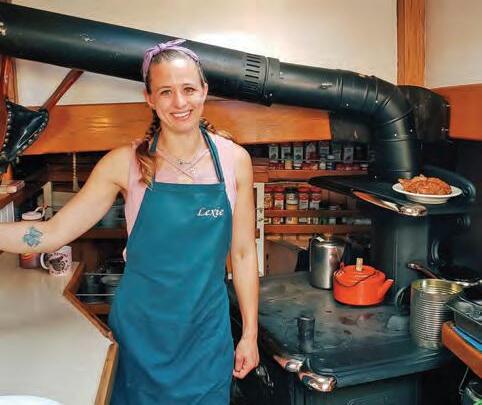
Not long after that, Kathleen and I both independently revisited the idea of Manitou in conversations with Alysia. We both talked to her about it without having brought it up as the three of us at any time. And the response from Alysia was, “I want in.”
MS: And how did you know the Traverse Tall Ship Company was for sale?
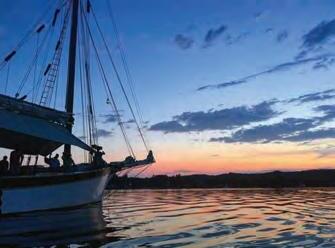
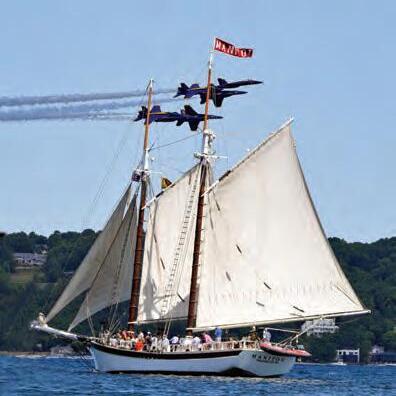
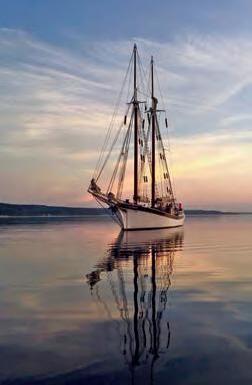
Jamie: We’ve been talking to the previous owners; they put the word out that they were looking to sell. I’d had a number of conversations with Dave McGinnis over the years, from 2016 onward. We were both good friends with
Tom Kelly, who passed away early in 2016. Tom was the founder of Inland Seas, the organization that had brought me to Traverse City in the first place. I’ve been here doing fill-in work for Inland Seas a couple of times since then, and every time I was in town, Dave and I would have a conversation about where things were going.
Then in 2020, things got pretty serious. Kathleen and I actually bought a house here to gain a foothold in town and establish ourselves. And that was when the conversation started to really heat up and we started to talk to the banks and all the other players. That is mostly finished now; there’s still a couple details of wrapping up.
MS: Did Manitou and Scout come as a package deal?
Jamie: Yeah, there had been at one stage the idea that the Scout was going to go separately, or the McGinnisses were going to retire on the Scout, but they got the classic ten-foot fever. And so they have a larger boat that’s going to be their retirement boat now. And Scout became part of the package.
MS: She’s a Cabo Rico 38?
Jamie: Yes, that operates as a six-pack with a Jones Act waiver, mostly doing two-hour trips through the season. There’s one really cool trip that we do with her where there’s an island in Grand Traverse Bay that’s only accessible by private boat. So Scout takes people out to that island.
MS: As you take over this business, are you going to continue what the McGinnisses were doing, or do you have a different plan for moving forward with these two vessels?
Kathleen: Theirs is a model that works. I mean, we want to put our own stamp on some of that, but it’s definitely a model that works.
MS: So tell me a little bit about the McGinnis model. They have been running Manitou since she came to the Great Lakes?
Jamie: Dave and Mary were involved from 1990 until last fall.
MS: And how did the business plan evolve from when Dave got involved as ownership, and up to the point where he sold the vessels to you?
Jamie: I think it had evolved based on the fact that
when they bought the company it was a single boat. The current structure that they have is that from Memorial Day through Labor Day, the ship does an aggressive daysail schedule, up to 24 sails a week. And then we switch over to the overnight windjammers. That was something they wanted to continue doing because he had grown up in the Maine fleet and really enjoyed that programming, where you get to know folks a bit better and you get to stretch your legs more.
But the [daysail aspect of the] business model was better, with the tourist traffic in Traverse City. It’s a Mecca for people from other parts of Michigan and the surrounding states in the summertime.
One thing that has changed is that Manitou used to offer a dockside bed-and-breakfast, but in the wake of the new regulations and increased manning requirements from the Conception disaster, that became untenable in terms of the number of crew involved. So we pivoted, and now the new thing is a Friday, Saturday, Sunday brunch cruise.
MS: You’ve got a lot of cards up your sleeve, with the brunch cruises and the ice cream cruises and the music cruises! Were those things happening under the previous ownership, or is that an attempt by your new group to throw pasta against the fridge and see what sticks?
Kathleen: They were already doing ice cream and Song of the Lakes music sails and the brunch cruises. That’s part of what was very attractive about the business — it had a variety of small tweaks to appeal to children, or people who appreciate maritime culture, or…
Jamie: Or appreciate ice cream.
Kathleen: Or appreciate ice cream. And we have some of our own ideas about adding to that programming. Jamie, you can talk about that since you’ve been spearheading that effort. We also have some other things in the mix that I don’t think we are ready to talk about just yet.
MS: Well, tell me more about the windjamming, then. I know Jamie has sailed on both coasts, on the Great Lakes, and grew up in that area, but as far as I know, you haven’t done much windjamming.
Jamie: I like to tell people I’ve sailed all four coasts! This one is the North Coast, and I’ve sailed as a guest officer on Elissa, so I’ve been down to the Gulf Coast as well.
But yeah, I had done a tiny bit of windjamming. I worked for the Portland Schooner Company back in the early stages of that company’s existence. I was on board when they bought Wendameen and started doing one-night overnights, which are better suited to Casco Bay because there are not as many places to go.
I think it’s a great model, an excellent way for people to experience a deeper connection with the natural environment. And obviously, some maritime culture. There are so

many studies that show that whether you’re getting on a boat or in a kayak or going for a hike, that’s so big for everyone’s psyche.
And the windjammers are a much more immersive experience than a day sail, while still being in the realm of what normal folks can afford. It’d be great if everybody could do a circumnavigation or an Atlantic voyage, but their vacation time tends to get eaten up long before those sorts of things are possible.
MS: You mentioned Casco Bay being suited to a shorter form of windjamming, as opposed to Penobscot Bay. What’s Northern Lake Michigan like? Are there good anchorages for all wind directions? Are there different routes to take?
Jamie: We’re actually in a really amazing place for that. It’s not as densely packed as Penobscot Bay where every time you throw a rock, there’s a picturesque town. You have to skip the rock a few times, so to speak. But every 12 to 15 miles there is an attractive anchorage or quaint little town to go to. The only disadvantage is that we’re starting out of Traverse City, which is at the bottom of our body of water. So we have to be careful if it blows out of the north.
For a three to five-day trip, off the top of my head, I’m thinking of nine different options for anchoring. Some of them are pretty aspirational. You need a specific set of wind conditions to get to and from Beaver Island, or one of the Manitou Islands, those are the Holy Grails. But there’s no shortage of other small places that have access to a gorgeous island, a really nice beach, or a cute little town. And this part of the world is where Hemingway grew up, spending his
summers. So we have that American literature going on, too.
MS: It sounds like you’ve got enough there that you can get people to come back year after year, knowing that every trip is going to be different, as they do in Maine.
Kathleen: You find a lot of generational tourism up around the Traverse City area. People who’ve been coming up there because their grandparents used to go there. So you get really deep-seated family roots in the tourism industry.
MS: Let’s follow up on that. Tell me what you see as your market for the windjammer cruises and during the summer for that aggressive day-sail schedule. Who are you selling these trips to, and how do you do it?
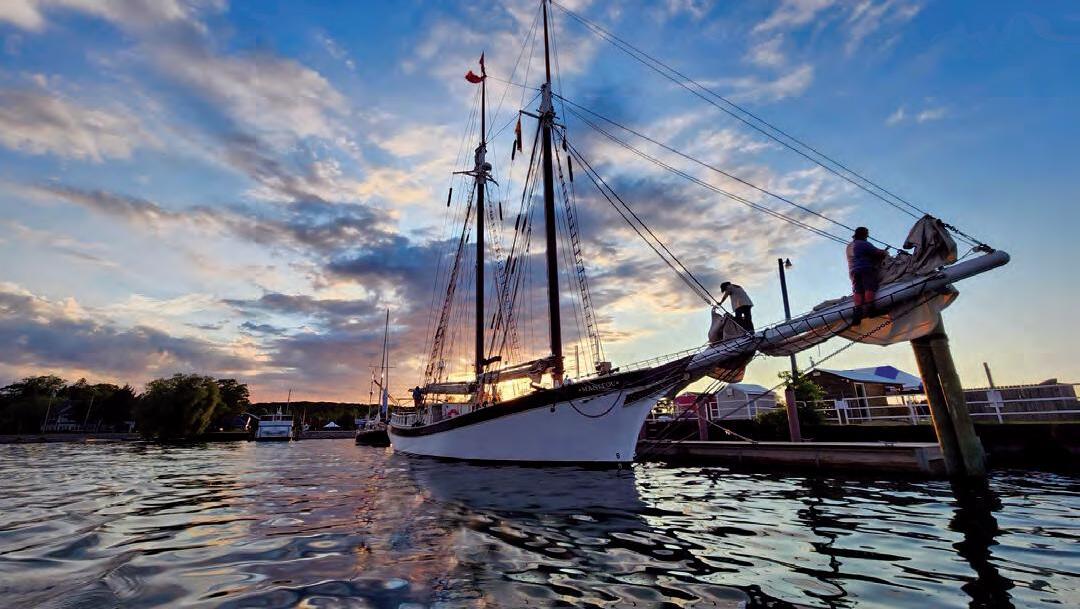
Jamie: Traverse City itself needs very little advertising; millions of people come to this region in the summertime. We’ve got, at this stage, essentially tropic-blue water. A variety of invasive mussels in the Great Lakes have cleaned things up, and we’re still waiting to see how that impacts the ecosystem.
But in the meantime, the water’s clear down to like 35 feet. You can see the bottom, the hillsides are lush with trees. They’re just farms and vegetation all over the place. And the town itself is a small walkable thing. We don’t need to advertise to get people to town. We just need to advertise to get people on the boat when they’re here.
So the summer season is a combination of return business from before, people who heard about us through the local media, and of course the classic tactic of, if the later
daysails aren’t sold out, we’ll make sure to sail past the downtown on our first trip and show the flag!
Kathleen: It’s not dissimilar to Erie, Pennsylvania, where so many businesses have appropriated the image of the US Brig Niagara. You’ve got a lot of businesses advertising and marketing an image of a schooner or tall ship, and we’re the most prominent one in town. In people’s minds, there’s this idea of the boat with the big sails. And while there are other boats around the area, we’re the ones around the waterfront, downtown.
MS: You’re being helped by the marketing, the perception of the Traverse City area. People see it as a port, a place where people go out on the lake.
Kathleen: Actually, when people think Traverse City, they think cherries! That’s the first thing that comes to mind. But you still have such an incredible waterfront tradition in this town.
MS: Did you say cherries?
Kathleen: Traverse City claims to be the cherry capital of the US. I’m not sure current economics upholds that, but we’re sticking with it. The National Cherry Festival draws over a million visitors over 10 days to Traverse City.
Jamie: Kathleen’s talking about these are two different eras of Traverse City’s history. I mean, obviously the original residents here were a combination of Ottawa, Chippewa and Potawatomi Native Americans. But the first real industry that existed in Traverse City was logging. And there’s a river and a lake system here that had enough power to run as many as six sawmills. And schooners were bringing the goods in and the timber out, so Manitou fits right in with that tradition.
Unfortunately the lumbering practices weren’t sustainable and eventually all the land was cleared. Farming took over, and cherry farming became the key crop. And it didn’t take long before people started to come to Traverse City to
get the cherries and realize that this is a beautiful area to hang out in.
MS: You Great Lakes sailors have the Tall Ship Challenge blowing through every three years, bringing all kinds of vessels to the area. Is that a game-changer when that happens? Do you sail away and join the circus, or let it kind of wash past you and around you?
Jamie: Oh, it’d be great to see some of the boats at the pier that we’re at. But because of the established nature of this business, it actually doesn’t work for us to go to the festivals. The business model is to stay here because we’ve got our own dock, we’ve got a pretty good feed of people, and we’re not set up to make passages like that, where we’d be underway constantly with passengers on board.
Traverse City, unfortunately, doesn’t see as many of the boats that visit the Lakes because we’re like 60 miles out of anybody’s way when they’re heading in between ports. But we have this amazing pier that was the old coal pier in town. A local nonprofit has been refurbishing it. They’re going to landscape it, put a pavilion on it, it’s going to be a public event space, and there is room for a visiting ship to come in.
MS: Here we are in March. You’re getting ready to take the cover off your 40-year-old schooner. What kind of shape is she in? What projects do you have on tap for the spring?
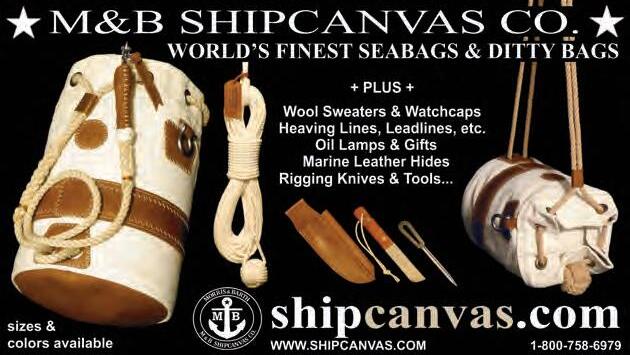
Jamie: She is quite frankly in amazing shape. The previous ownership and the owners before that have always done a great job of taking care of her.
There’s a relatively new deck on her. We took that down to bare wood and oiled that up over the last winter and springtime. The hull, because we’re in freshwater all the time, does not look like a 40-year-old steel boat by any means, compared to saltwater boats. And the sails have been replaced on a regular basis. The ship’s just been well maintained.
We have some things that we need to do, regulatorywise, because we’re an overnight tour boat so we’re captured by some of the new post-Conception rules. But for the most part it’s business as usual.
MS: Tell me how this triumvirate of yours is going to run things. You’re going to be the principal skipper, I presume?
Jamie: At the moment I’m the only one of us who’s an employee of the company; we’ll see how that unfolds as the years come by. Alysia should elaborate more on her maritime credentials because they’re significant. But she holds a 200-ton Ocean Master’s license that’s sail endorsed. And Kathleen has a tremendous amount of background before the professorship, in business opera-
tions because that’s what she was doing when we first met. So we have a good Venn diagram between the three of us.
Alysia: The Venn diagram is nice because it’s not a circle, but there’s a significant amount of overlap in this center.
I’m a Kings Point graduate and I’ve worked my whole professional credential career as an officer on cable installation and repair vessels. For the last two-and-a-bit years I’ve been the Chief Mate of a 20-yearold surface lay ship. I think I’ve done more shipyard in the last two years than all of the rest of the ships in my cable fleet combined — seven other ships. So I’ve gotten a lot of experience with the project management, the shipyard piece, steel hulls obviously. I am used to the saltwater side of that.
So I’ve got more of the sort of operations and project management side. And then like Jamie said, I do have that 200-ton Oceans sail endorsement and I’ve moonlighted through the fleet on and off over the last eight or 10 years as a senior deckhand and a mate. As I look to the future, it’s a question of how to balance my commercial career against the allure of Traverse City in the summertime. It’s pretty strong, strong inducement to swallow the anchor a little bit.
MS: Does Traverse Bay have good facilities? Are you able to work on your boat where it is? Is there a good haulout facility?
Jamie: Oh, that’s a great question. We’re in the Great Lakes where a steel hull only requires haulout every five years, so that’s another benefit. In the past they’ve been having to cross the lake to either Wisconsin or the Lake Michigan side of the Upper Peninsula…
MS: How long is that trip?
Jamie: It’s a 116-mile trip. Nowadays though, at the Straits of Mackinac, just on the north side in a town called St. Ignace, there’s a yard that recently acquired a 200-ton lift that has a wide enough lift well for us. So that’s a more north-south route, and a shorter distance, and it provides more options if we needed to bail out someplace and tuck in for the night. So that’s on the docket for this year at the beginning of May.
Jamie: For the whole life of the company up to this point — since 1989 — some portion of the spring has been dedicated to being chartered by Inland Seas Education Association for programming. In fact, when Tom Kelly started that organization, they didn’t have their own boat. So they just chartered Malabar and then later Manitou.
But as you posted this online, Inland Seas just bought another vessel [the threemasted schooner Alliance, formerly sailing out of the Jamestown River in Virginia]. So we’re looking at this being the last year where we do some of that programming, although that’s up to them — we’re willing and able to help out. As

Kathleen points out, my second boat was Inland Seas, as a deckhand. So we’re always eager to help them out, but we’re unclear if that will happen in the future.
This year the first programming with them will be the 22nd of May. If we didn’t have those programs, then Memorial Day weekend would be when we officially start with the public.
MS: What else do you want people to know about your business and your boats?
Jamie: Sailing, as I see it, is nature therapy. I actually went through a course to become a certified forest therapy guide and visited Japan as part of that process to investigate how they do it. Just getting people to experience things outside of their normal zone, and to feel that the sensation that we refer to as awe, is what we want. Manitou and Scout are both excellent for that. They’re both great boats, and they’re also guest stars to the beauty of Grand Traverse Bay.
Alysia’s credentials come with a whole bunch of training, and that’s always been a focus of my career. We’ve got some qualified assessor credentials between the two of us. She has a lot more than me, because of her licensure, but we can help people advance their careers. And we’ve also navigated the NMC process to a pretty hefty level. So we want to put a renewed emphasis on the professional development part of the career.
MANITOU“is quite frankly in amazing shape. The previous ownership and the owners before that have always done a great job of taking care of her,” says Jamie Trost
PORCUPINE, now sporting a traditional laid deck, was originally intended as a cruising boat for an Ohio couple. Donated to Bayfront Maritime in 2014, she’s been reconfigured to represent an armed schooner that accompanied NIAGARA into battle in 1813




Since 2014, volunteers at Erie’s Bayfront Maritime Center have labored to covert a donated fiberglass hull into the schooner Porcupine, envisaged as an environmental science lab and research vessel. While the project progressed steadily for several years, it was derailed first by COVID and again when BMC’s executive director suffered a stroke. Recently, BMC and their neighbors at the Flagship Niagara League have agreed to collaborate more closely in a number of areas, including the completion of the Porcupine project.
Marlinspike: Chris, it sounds like you’re wearing a couple of different hats these days. Your email signature says you’re captain of the Niagara, and Bayfront Maritime pointed me to you as their Waterfront Director.
Chris Cusson: When COVID happened, I was the primary captain of Niagara, and also sailing as relief captain of Lettie Howard. In 2021, when Lettie did sail, and Niagara didn’t, I was the primary captain of Lettie. Then last year I shifted into more of a waterfront manager role for Flagship Niagara League, as well as sailing Lettie, and the main reason was that my wife and I recently had our daughter, about a year ago. That was a motivating factor to try to be more land-based. Although I was happy to sail on Niagara for a bit, last summer.
MS: Which of the local vessels has your daughter sailed on at this point?
CC: Let’s see. She’s been on Lettie about seven times; on Niagara once.
MS: She prefers the schooner; she likes to go to windward!
CC: Well, Niagara is away most of the summer, obviously. And then she ended her season earlier this past year than we normally do, which is in September. So, I was sailing Lettie and we were trying to get her out with me about once
a week. When my wife and her came out for the day, she would nap in Lettie’s aft cabin.
MS: That counts as sea time, right?
CC: [Laughs] I’m looking forward to doing the same thing this upcoming summer. She’ll get a lot of sea days!
MS: Let’s talk about Porcupine. Bayfront Maritime Center — like everybody — was hit hard by COVID. Before the pandemic, that project was moving right along; after that, yeah, not so much. Tell us what’s going on.
CC: As you mentioned, the organization was hit hard by COVID, because most of its programming was in-person, including their maritime high school program. But also in late 2020, Rich Eisenberg — one of the founders of the BMC and the executive director — had a medical issue that really knocked him out. He has been battling back, which is awesome, but losing the person who’s the focal point of your programming and operations definitely made it an uphill battle for a little while.
MS: So, understandably, the project schedule went into the dumpster.
CC: Absolutely. But coming to 2022, there was an opportunity, here on the Erie waterfront, for the Flagship Niagara League and the Bayfront Maritime Center to start collaborating operationally. This made a lot of sense, as we have been neighbors for 25 years now. And that has gone forward this past fall into this year. So I was made waterfront manager of both organizations, to help coordinate operations.
MS: Now, the Porcupine project started with a donated hull, right? My understanding is that the donors were building a cruising boat and then ran into some health issues, and decided instead to donate it?
Bayfront Maritime’s PORCUPINE project is looking to get back on the rails after COVID and misfortune brought progress to a halt
CC: This is second-hand; I wasn’t a part of the initial development of Porcupine. But my understanding is that back in 2014, an Ohio couple, Keith and Kathy Palmerton, donated the hull to Bayfront Maritime. Rich Eisenberg and Dave Bierig who’s a well-known, local sailmaker in the tall ship industry, came up with the idea — others might have been a part of it, too — to turn that hull into a traditionallyrigged vessel from the War of 1812 era. And then, more specifically, developing it into one of the schooners from the Battle of Lake Erie, that Niagara also participated in.
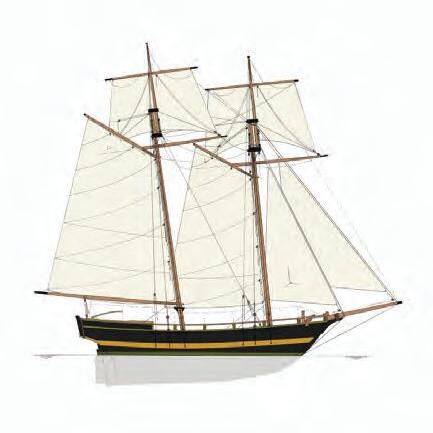
That was the initial idea, and a business plan was created, and they hit the ground running with Bob Arlet as the shipwright and managing director of the project. Then Jamie Trost became involved as the project manager, and was going to be the captain of it.
MS: So how far along is the boat now? When you started, it was a pretty bare fiberglass hull, right?
CC: It was, yeah. So a lot of adaptations had to be done to bring it in line with that 1813 timeframe. That work was done mostly in 2015, 2016 and up until about 2020 and early 2021. I would say at this point, the vessel’s probably 75 to 80% done. She’s pretty close, with the exception of most of the systems that need to be completed. A lot of the rigging has to be built. There are spars that were built, but they had to be modified for the new rigging plan, and then sails have to be made.
the ship is in her construction, with the Coast Guard certification process, and we started making a plan to move forward.
What we decided is that our first step should be making sure the vessel has a concrete program and curriculum before we finish the vessel, so that we know exactly how we want to finish it. So that once she’s launched, she has a purpose. Our next step is to bring together our local stakeholders — schools and organizations locally and regionally — and have them be a part of building the curriculum that they want to see on the Porcupine as their schoolship here in Presque Isle Bay, in Erie.
MS: What kind of COI do you think you can get for vessel?
“Flagship Niagara League has a good team... We can bring a lot to Bayfront Maritime, in particular with the PORCUPINE project. The BMC has a long history of making the water and the boats more accessible, and making maritime education more accessible to youth and adults here. They have a great facility as well, including the boat shop and classrooms. It’s just a natural fit to deepen our collaboration.”
— Chris CussonMS: If we went down to the boat this month, what would we see happening?
CC: Because the Flagship Niagara League and Bayfront Maritime Center recently launched this operational collaboration, we’re really coming onto the project new, with fresh eyes. We needed to do a little bit of figuring out about where everything is, make an assessment, and also bring in former stakeholders, get their take on things.
We took our first steps in this direction in late January. We got together with naval architect Iver Franzen, shipwright, Ron DeLappa, and some of our team from the Flagship Niagara League. We had a discussion about where
CC: We’ve had some initial talks with the Coast Guard inspector. We are hoping to get a small passenger vessel certification and a sailing school vessel certification for the vessel. She is, you know, fairly small at just over 42 feet long. But we are hoping for about 25 passengers, give or take. There’s about a dozen bunks in the vessel right now. This is all somewhat speculative at this point. But that is what we’re hoping for, moving forward.
MS: You mentioned the bunks. Since the Conception disaster, overnight programming has become more complicated. There are a lot more hoops that we need to jump through, if we’re going to have kids sleeping on boats.
CC: I think she’ll do most of her sailing as a small passenger vessel, not sailing with passengers overnight. But then, as a sailing school vessel, there is an opportunity there to sail at night. Obviously, having the ship only be about 80% completed at this point does give us opportunity to work with the Coast Guard and make sure that we’re meeting all their requirements.
MS: Do you think the boat might actually hit the water this year?
CC: No. I don’t think that’s going to be part of our plan; we don’t want to rush into it. Also, after getting all of our
stakeholders together, and building the program and curriculum, we need to revisit the funding side of things, to make sure that the funding is available to finish the vessel and not have starts and stops, as funding comes in and then dries up. So as we build out the programming curriculum, making an assessment of everything that we need, we also need to look back at the history of fundraising for the vessel. We want to make sure that whatever we do honors the wishes of the previous supporters of this project, before moving forward with a new campaign to fund the rest of the build. We haven’t really made our full assessment or started into that timeline. But our hope is 18 months, probably 18 months to two years.
MS: Speaking of fundraising, I remember Jamie Trost giving a presentation at the Tall Ships America conference about how to run a successful Kickstarter campaign. And as a result of that campaign, I have a Porcupine t-shirt! [Laughs] So that boat really needs to get into the water. I mean, what do you do with a t-shirt of a boat that never swam?
CC: Yeah, [laughs] we can’t have that! We definitely want to get the ship in the water and have it be in for a long, long time. So we’re not going to rush into anything at this point. We’re coming into it with fresh eyes, we want to make sure that we have everything lined up so that when the vessel does splash, she’s ready to go and she’ll be successful moving forward.
MS: It would’ve been nice to splash her this summer; this is the 25th anniversary of the Bayfront Maritime Center, right?
CC: Yes! That’s something that we’re celebrating. It would’ve been amazing and awesome to have it happen this year. But, you know, I think it’s going to be fantastic whenever it does happen.
MS: Before we let you go, tell us more about this partnership between Bayfront Maritime and Flagship Niagara. Where did that come from? How will it work? How’s it going to benefit both organizations?
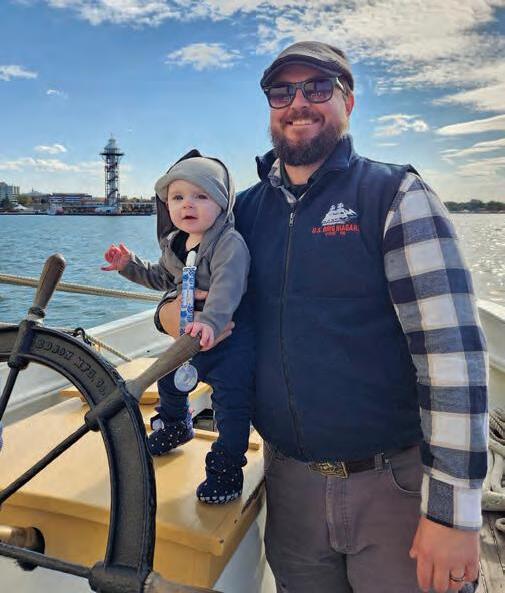
CC: I think that was something that was discussed by Billy Sabatini, the executive director of Flagship Niagara League, and Rich Eisenberg for a number of years. We both are fairly similar in our missions, in terms of what we do here on the waterfront, and we’re neighbors here at Erie. I think it’s something that has been a long time coming.
Flagship Niagara League has a good team; we’ve been sailing Niagara for decades now, and Lettie Howard since about 2018. We can bring a lot to the Bayfront Maritime Center, in particular with the Porcupine project. The BMC has a long history of making the water and the boats more accessible, and making maritime education more accessible to youth and adults here. They have a great facility as well, including the boat shop and classrooms. It’s just a natural fit to deepen our collaboration. b
For more on the Bayfront Maritime Center and the Porcupine project, visit bayfrontcenter.org.
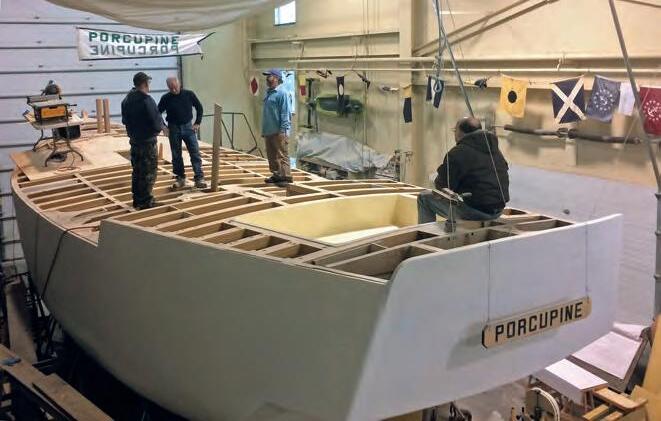
Cordelia Cusson takes the wheel of LETTIE HOWARD as she accumulates sea time toward her first license; her father stands by, awaiting orders

 Richard Bailey
Richard Bailey
I could tell so many stories about what a nut magnet Rose was in her early Newport days...
After the bars closed one night I spotted two drunks slithering up one of the stern lines. They took no heed when I told them to go back, so I cast off the line and dropped them into the harbor.
Or the time some guys climbed in a gunport to steal stuff, but lost one of their wallets on the way out. Or the drunk girl who got wet sneaking aboard, so she stripped down and then fell asleep naked. The naked girl was found by tourists who went off the ship to tell John Millar at his ticket booth about her. They asked if she was ‘part of the exhibit.’ That story made Yankee magazine.
Then there was the time I was up on the main top with a lady friend and we felt the shrouds shaking as some neophytes tried to climb the rigging. I quietly slid down an adjacent backstay, stopping just above their heads to yell,
They didn’t fall out of the rig, but they went down faster than they came up.
At first I would confront intruders with “What are you doing here?” The typical nonchalant answer was invariably, “We’re just looking around.” I’d ask them where they lived, what street, what number.
“So if you wake up at 2 a.m. and I’m in your living room ‘just looking around’ that would be OK?”
I lived aboard and finally got tired of getting up at night to confront drunken intruders with my less-than-formidable presence, so I’d sleep with a six-foot oak capstan bar placed vertically next to my bunk. When I woke to footsteps on deck, I’d slam the baulk of timber into the overhead a few times and yell, “You better get the hell off this boat before I come up there and break your legs!”
Never failed to result in the scampering of fleeing feet.
I was with Kalmar Nyckel in Hampton, Virginia for a pirate festival of some kind, and some drunk yacht bros snuck onto the ship one night.
What they did not know was that, due to the heat, our youngest shipmate, who I believe was 14 at the time, was sleeping out on the foredeck, with the “spear” he had made out of a big stick, and wearing the furry viking hat with stuffed-animal horns on it that someone had bought him as a joke. He popped up, horns and all, raised his spear and screamed “WHO GOES THERE?” causing the drunk bros to run away up the dock, dropping the gun bucket they’d stolen just a few yards down the pier.
My first night on the Black Pearl, tied up in LA, where she had been hired for some re-shoots of Pirates of the Caribbean 2 & 3. I arranged to stay aboard, so I’d have a
Something about tall ships and traditional sailing vessels is irresistable to drunks, vagrants, and ne’er-do-wells of all kinds. We asked our readers to recount their experiences
short commute for our 6 am start times. Ship was not plugged in yet, no lights or machinery. I came aboard in the afternoon and found a bunk; we were starting up the next morning.
At 2 am or so I hear girls giggling and a guy’s voice, and see some reflected light from a flashlight. Sneaking close in the dark, I get my best bosun’s voice up and yell “WHO THE F*** IS ON MY SHIP?”
Screams, running, people stumbling in the dark!
I go on deck and the culprits are paddling away, three in a two-person kayak.
Had to call security, and security called the police, so of course I had to fill out paperwork and didn’t get any more sleep that night.
Paul DeOrsay
I was mate and then captain of Gazela Primeiro from 1976-79, when she was owned by the Philadelphia Maritime Museum. Our berth was at Penn’s Landing, a public park on the Delaware where we were open as a dockside attraction and served as the stage for folk music concerts on the weekends. We were highly visible and accessible.
As the only full-time employee on the ship, I usually slept on board. Needless to say, we had plenty of evening visitors, especially Fridays and Saturdays at bar-closing time.
One very early morning, something awakened me in my bunk, and I rolled over sleepily and propped myself on an elbow to figure out if something needed my attention. With a shock I discovered a disheveled-looking woman standing in the cabin doorway, about two feet from my face.

Once she saw that my eyes were open (I suspect with plenty of white showing) she demanded: “Where’s Bruce Lee?”
When I failed to respond with anything but a baffled look, she continued more insistently: “Where’s Bruce Lee? I’m supposed to meet him here. This is his boat.”
I explained politely that she might be mistaken, this was not Bruce Lee’s boat, and I worked for the real owners.
“This here’s Bruce Lee’s boat, and I’m to meet him here. Where is he?”
I concluded that a simple explanation was not going to extricate me from this situation, the complexity of which was starting to sink in. There I was, in bed, in my underwear, at 6:00 AM, with a crazy lady I had to somehow get out of my cabin, up on deck and across the gangway, while she was convinced that I was an interloper on her movie-star hero’s private yacht.
Somehow I managed to get my pants on and, explaining that I had not been advised of Mr. Lee’s plans, managed to talk her back up on deck and, ultimately, off the ship to await Bruce Lee’s second coming.
I spent a couple of nervous hours as she sat on shore and watched the ship and me, but ultimately, after she explained her mission to two Philadelphia cops, she was escorted out of the park.
Rachael Zoe Miller
On American Promise in Providence, RI, 2012. 0200. Woke up to one familiar and two unfamiliar voices. By the time I rolled off my upper bunk, found my glasses and made it to the main salon, I saw the back end of two people leaving quickly and my education director just standing there. While five of us were sleeping, two interlopers, a man and a woman, made their way down below and into the main salon. American Promise is more of an around-the-world sailing yacht than a tall ship and has sole-to-ceiling supports, some of them stainless. The phrase that got our ed director out of bed was, “Look, they have a stripper pole!”
Our crew agreed we were thankful that Rebecca woke up as early in the incident as she did, because we felt we dodged a very awkward scene that might have been about to happen on our dining table!
Jamie White
I would like to introduce a gruff wizened shellback named Clyde. Clyde was a bit of a mascot aboard Bounty while we were in Long Beach, California at Shoreline Village, and spent many a long night standing watch at the main fife rail to discourage folks from boarding uninvited. He is a creation of that most talented and eclectic Jack Tar, Steve Johnson.
Jim Strebeck
When I was running Hindu my first season in Key West I was awoken in the small hours by the sound of a number of spring breakers stepping aboard. I rushed up the companionway to tell them to leave, neglecting to put any clothes on. Hindu is a warm boat to sleep on, and it’s not like I expected to rush to the deck when I went to sleep.
Naked captain bursting onto the deck got them to leave pretty quickly.
Perry Davis
It was in the middle of the night and we were tied up in Liverpool England aboard the British three-masted bark
“Clyde”
Kaskelot. I am a light sleeper, and something woke me up, so I went up on deck to investigate and found four or five locals boarding the ship.
I being still partly asleep told them to keep it down, since the crew is sleeping, then started back to the foc’sle. Once back in the foc’sle I stopped, and now fully awake, realized what I had just done.
I turned back to the deck and told the trespassers that they needed to leave. They didn’t seem to understand what I said and with thick accents they started asking me questions. I couldn’t understand what they were saying. I told them they had to leave and this whole scene repeated itself.
At this point I told them that I couldn’t understand what they were saying since as an American I only was fluid in bad English and was going to need a translator. I went back to the focsle and woke up the bosun — an angry, excitable Irishman who might be able to help me persuade them to leave. Now we were both out on deck along with some of the other crew. The crew were getting more worked up and confrontational, and these locals kept calmly asking questions like a tourist would at a dockside tour. Only this was around 0300.
Well, eventually the trespassers left and I asked the crew what they were saying since I could not decipher the words through that accent. The crew told me they were speaking Scouse and therefore they couldn’t understand them either. Turns out Liverpudlians are known around the rest of the UK as Scousers, and they speak Scouse, which is a thick accent peppered with local slang no one else understands.
And that’s just one of the fascinating things I learned in our stop in Liverpool.
Mike RutsteinWe’re docked at a private marina in downtown Salem, and although there are 11 berths, rarely does anyone sleep on board. The marina gates are locked, and for years we had no problems with security. Then one morning we showed up for work to find that people had been on board during the night, drinking our beer and eating our snacks!
It happened once, and I shrugged it off: “Kids!”
It happened again, and the trespassers had dropped and broken a beer bottle in the focsle and simply left the broken glass. I hung a NO TRESPASSING sign on our boarding stairs, and informed the dockmaster.
The third time, a rumpled blanket in a focsle berth indicated that the nocturnal activity had gone beyond mere drinking & snacking. I alerted the harbormaster, who in Salem is part of the police department.
Luckily, there was public access to a security camera on a nearby building. I began checking the live feed each night before I went to bed, and each morning as soon as I got up.
With a week, I got up early one morning, checked the live feed, and was treated to the sight of a young man and woman lounging on my foredeck, drinking my beer! In a hot minute I was out the door and jogging toward the marina, generally a ten-minute walk, and on the phone with the
harbormaster. I reached the gate at the same time the patrol boat came surfing down the channel and we trapped them on the dock: a defiant young woman with a lot of ink and a terrified young man who pissed himself.
I hear she turned out to be a “person of interest” to the Salem PD, but on the advice of the harbormaster, we did not press charges and left matters up to them.
Never had a problem since.
Anne Beaumont
On Tenacious in 2014, we were tied up in Bruges and some curious visitors from a Travellers camp across the road pinched a few things from the ship in the night, including most memorably, the “crew only” sign from the gangway.
One December we were having a regular maintenance Saturday at the Seaport and Santa Con was happening in the neighborhood. One Santa tried to board Peking, another climbed aloft on LV-87 (our lightship) and yet another barfed on one of the anchors on the pier near the woodshop.
Doug Faunt
IIRC, one of the crew on Spirit of South Carolina found a couple going at it at the helm.
Corey Roy
On Virginia I went into the focsle one morning during winter maintenance to retrieve something. I noticed one rack curtain was in a slightly different position than it had been the day before, and the smell in there was slightly different than normal — maybe like dirty feet? I didn’t think anything of it, though, and headed aft to do my work.
That afternoon, a homeless-looking fellow walks into the main salon from up forward. My jaw just dropped because I realized why I had noticed those things earlier.
The guy said, “I didn’t touch anything... How do I get out of here?”
I just pointed to the hatch dumbly and he left.
Now there are locks on the hatches.
Katie Walker
Remember the guy who ate all the pie?
Perry Davis
No, please remind me. This sounds good.
Katie Walker
He was a repeat offender in Camden. We thought it might be a raccoon at first cuz he’d always raid the galley, and it always looked like a wild animal had been through. One night we left a whole pie out, and in the morning it was completely destroyed, the pie tin was full of milk, and he’d ripped the front off of the silverware drawer trying to open it. When we eventually ID’d the guy, it turned out to be just a Gilberts [Publick House] regular who the Commodore had told to “come by anytime.”
Perry Davis
Well, I’m glad he didn’t hire the guy.
Barbara O’Brien
Anyone from Picton Castle remember Uhu [Island, in the Solomons] where all our shoes were taken and the First Mate had to go to the Chief to get them back?
Dennis Gallant
I am constantly amazed at the number of people that walk on Angelique when she is tied up. My crew will politely ask if they can help them and the reply is usually “Oh, we just want to take a look”. Seriously? Please ask permission before you just walk on and we will be happy to show you around if we are not busy. It was so bad I put a “No Trespassing” sign up on the door this fall (the cover is on the boat) after several people walked on.
Beth Landers
I definitely interrupted a date. Woke up to the sounds of someone on deck, despite there not even being a brow out. He was trying to impress his lady friend by acting like the ship was his. You know, this ship docked at this museum, behind chains and fences he didn’t have a key to? Then after I informed them they were, in fact, trespassing, they were struggling to get back off the ship with no brow rigged. I was unsympathetic and let them figure it out for themselves. It was far easier to step off than on anyways.

I don’t know if he succeeded in wooing her. I went back to sleep.
Aaron Paolino
The worst was on Spirit of Massachusetts in 2006 on Nantucket. A crew member of a nearby yacht snuck on board with a friend and was swinging around in the rigging, fell, and his friend dragged him onto the dock where the ambulance picked him up. Some of us woke up when the ambulance arrived, but otherwise we had no idea he was even on board!
Dirk Aurin
During a Great Lakes tour on Providence 30 years ago we were boarded in the night. Our first night dockside in Toledo, we had a group of kids climb aboard and try to pull the brass running lights out of the rigging and the swivel guns off the rails. It was harder than they thought. We poured out of the hatches making a racket and easily startled them off. The following nights, we slept on deck with belaying pins under our pillows, which was probably overkill.
“Flash” Johnson
Final night at our second-to-last port aboard the Gulden
A drunk Aussie transit crew were returning to their sailing yacht docked across from us. Probably seven or eight and they took to wanting to climb our rig.
Our gangway watch were two of our smaller trainees, who did their best to deter them but were unsuccessful. So they pulled the fire alarm and woke the entire ship’s complement of 57.
These trainees were nearing the end of nine months of open-ocean sailing and had more than 23,000 nautical miles behind them.
The Aussies didn’t take kindly to an ever-growing number of crew and trainees telling them “no” and started swinging. It went very badly for the Aussies, and ended when the yacht captain ran over to get his crew. Our lanky 6’4” Dutch captain wearing nothing but his tightie-whities threatened to cover their yacht in 1200 gallons of black water if he didn’t get control of his crew.
Horta police asked if we wanted to press charges, but aside from some bloody knuckles, none of our crew got hurt, so we called it even.
Bonus: As we were slipping lines the next morning for Amsterdam, two of our trainees jumped the gap with their arms full of shoes. It’s weird how people just throw away perfectly good, expensive boat shoes by lining them up along the dock.
Matt Friske
Tied up at 2 am in Fells Point, Baltimore, after a long hard cold transit, put the boat to bed and went below. Within half an hour a group of 20 teenagers were on deck, within three hours myself and crew had to tell at least five separate parties to please get off our boat.
Kevin PorterI was skippering Talofa in the ‘05 Pacific Tall Ships Challenge. In Channel Islands Harbor we had a stray dog sneak aboard, tear into our t-shirt supply and build a nest. Ruined a fair amount of merchandise. The owners were not happy, to say the least.
The dog was pretty bummed out when we put her off onto the dock and she kept coming back. We suspect that she also went for a dip in the ship’s hot tub — ‘cause all of a sudden the water was a pool of dirt & hair. b
If you enjoyed this story, hunt up the one we did on the dreams (and nightmares) we sailors share. And contribute to our next crowd-sourced story via the Marlinspike facebook page!
The sun sets over the Pacific Ocean, backlighting a swivel gun on the quarterdeck of HAWAIIAN CHIEFTAIN during a transit from Sacramento to Long Beach
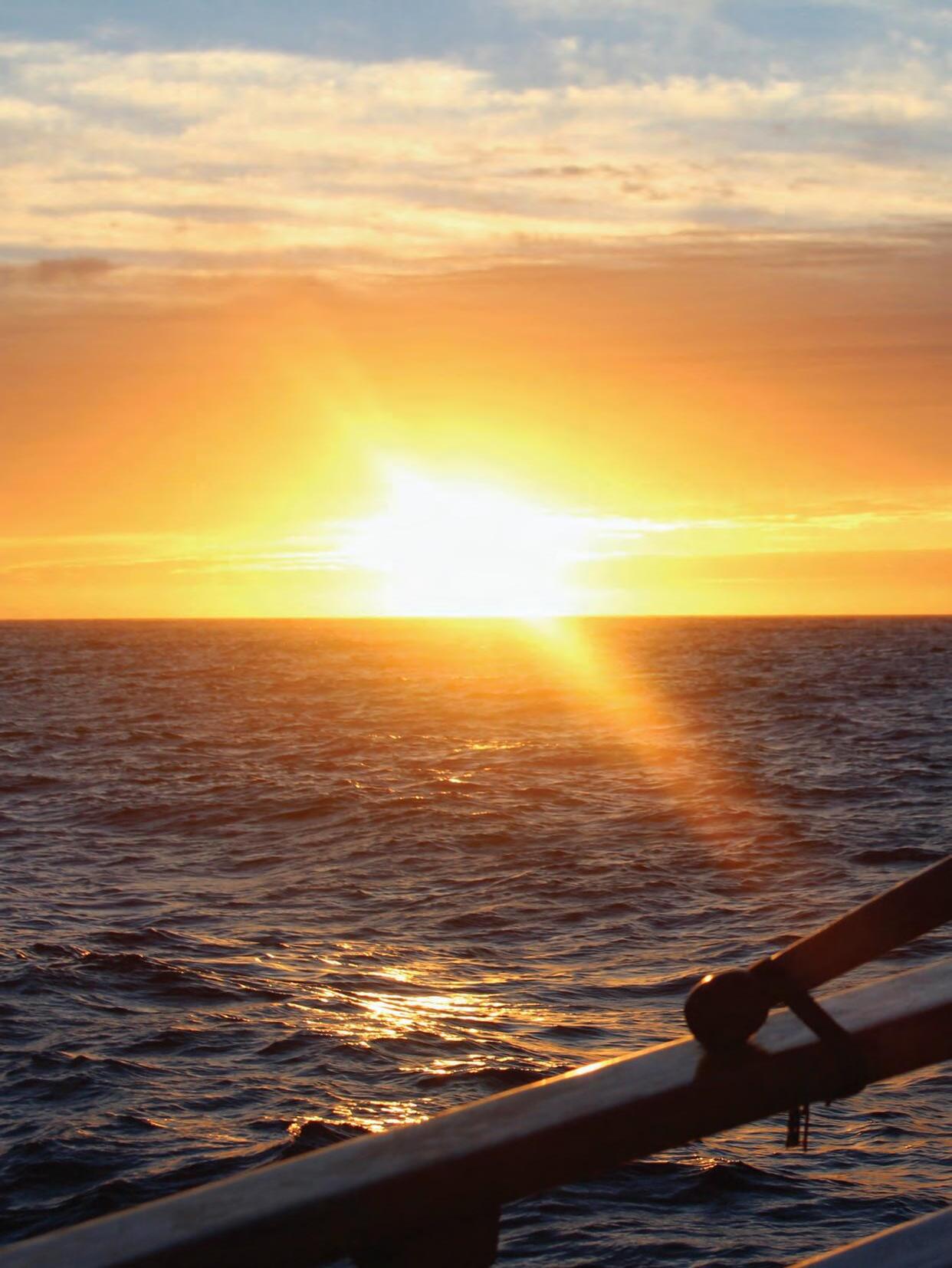
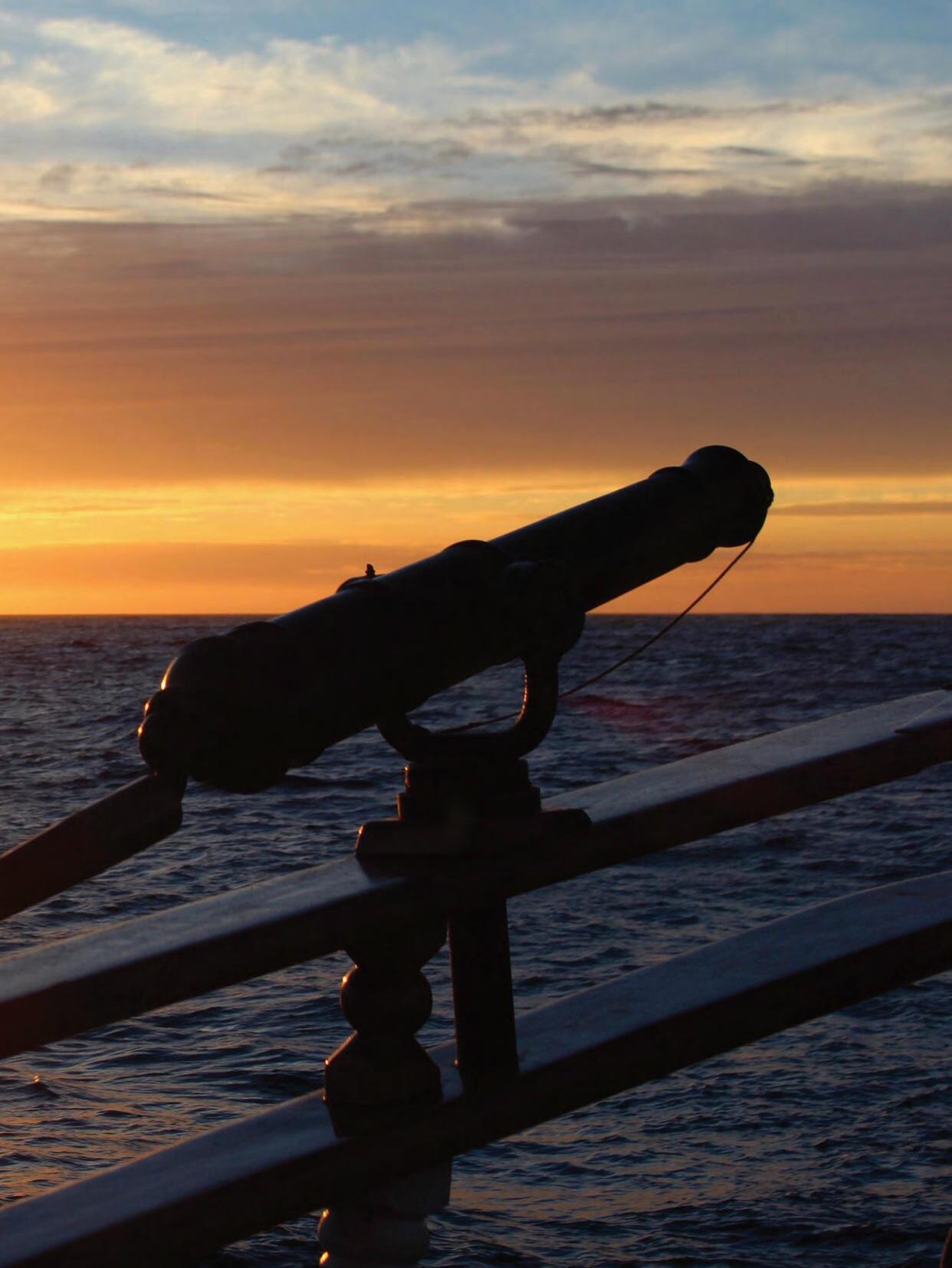

Continued from page 9
what.
MS: Let’s say you had a shop, and you had apprentices. What would be the first steps to get the boat going?
Scott: We gotta patch the bottom. Like I said, we have the material for that already, bought and paid for. Just as important is to get the hatches and decks watertight, and the bulwarks on; right now she has to be pumped out every time it rains. And that’s not good for the hull.
ing and the bulwarks, really.
MS: What woods were used in her originally?
Scott: Madeira and dogwood and horseflesh. Horseflesh is an ironwood, hard and dense. The planking is all Honduras mahogany, naval bronze fastening.
MS: How do the fasteners look?
Scott: Okay. I did not like the deck from day one, that fir deck. I didn’t think that was a good idea. It was fine when you were working every day…
Well, those are the things that require the least expenditure, in terms of rebuilding a boat. I mean, the hull is surprisingly not the most expensive part of the boat. Having all the equipment, and being able to start without a heavy requirement for money, that’s a good thing.
Jay: It’s not like you got a keel or the framework that has gotta be replaced. It’s still all good. It’s just some plank-
MS: Do you have an original sail plan or lines? Did William Albury work from blueprints?

Scott: No, nobody here ever did that. But Fred Whittier was somewhat of a naval architect, and as I said he did a lot of the lofting. He might have drawn her lines. ❂
For more info on the effort to rebuild the Albury, visit: www.facebook.com/SchoonerWilliamHAlbury
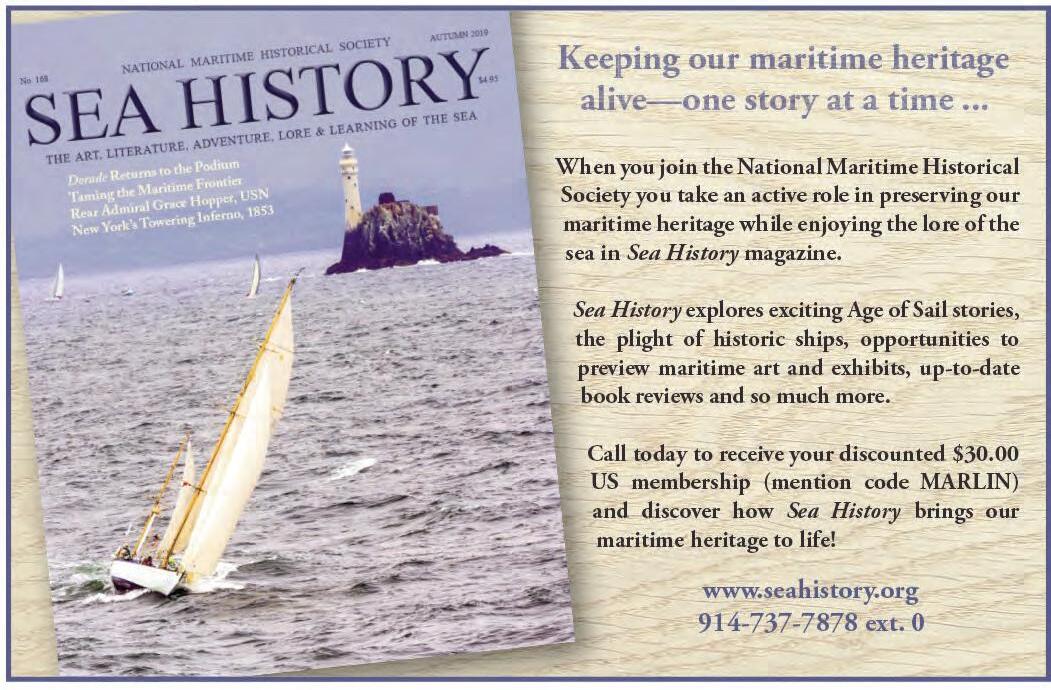
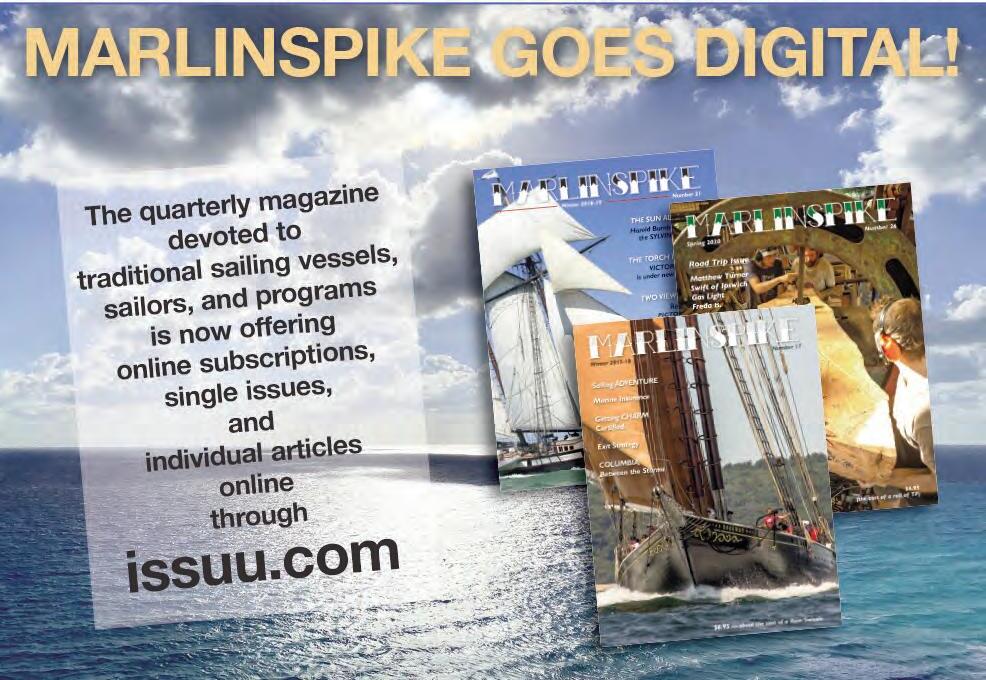
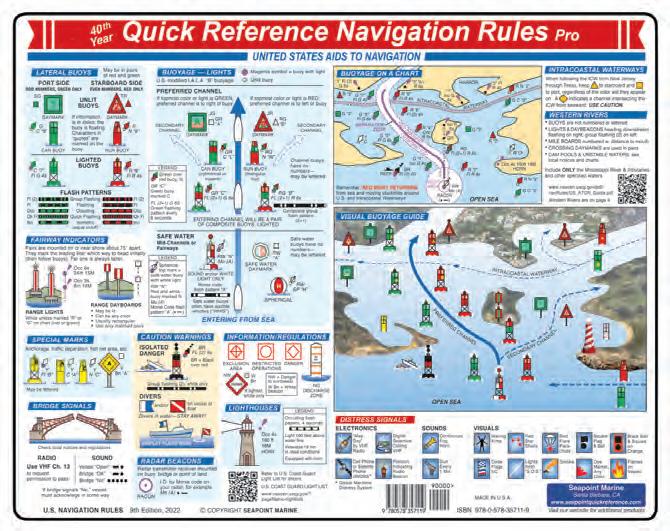
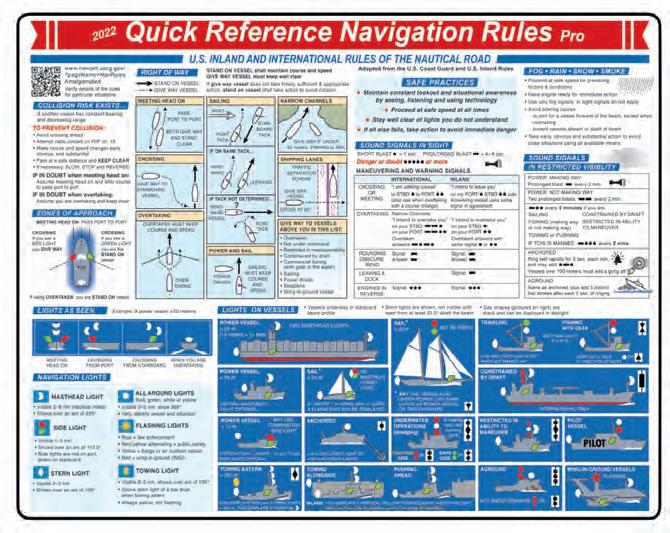
Continued from page 15
We want the ship to be more deeply engaged in the local community. The name Manitou comes from a local Native American word that means spirit. Literally, the boat is the spirit of Grand Traverse Bay. And ever since I’ve been here, we have been flying the Grand Traverse Band flag as a courtesy flag to acknowledge that these are the ancestral land and waters of the Band, and they still have the strong fisheries that goes on here. We’re hoping to get involved with some programming with them.
MS: I’m sure like everybody else in North America, you guys are hiring. So let’s insert a plug for whatever positions you need to fill between now and May.

MANITOU
Jamie: We’re still looking for a last deckhand and a relief captain. We’ve got two vessels. We’ve got another individual who’s not on this call right now, the captain of Scout, and she’s got that covered. I’ll be on Manitou, but we’ve got two boats that run seven days a week. So because we’d like to take a breath sometime during the summer, we need some relief help. We’re flexible on that and those ads are up on our website as well.

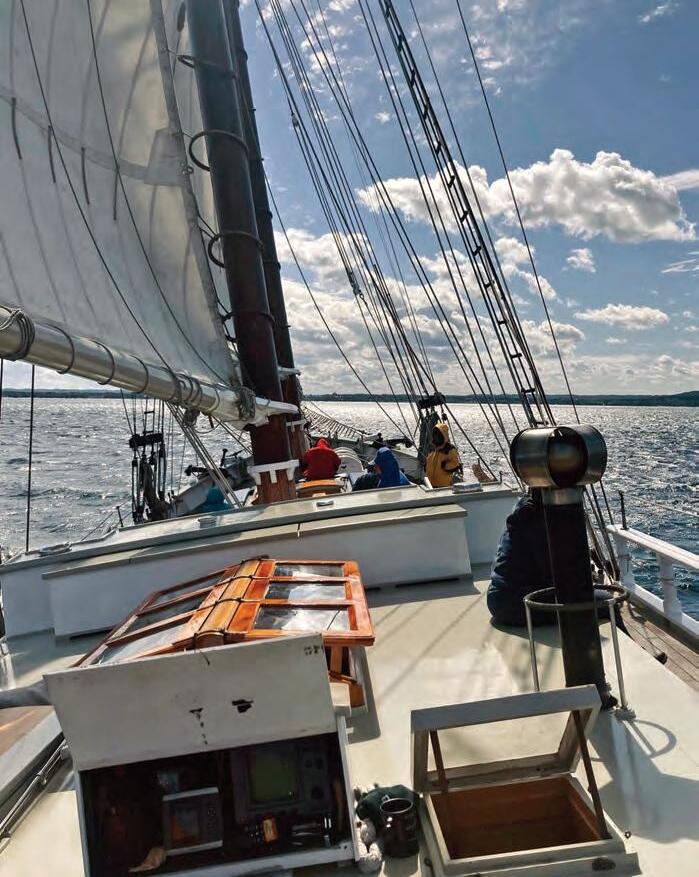
Alysia: It’s obvious which one of us is a full-time employee of the company right now. But I think I can speak for all three of us when I say that buying a business is a big project, and it was a big new thing for all three of us in different ways.
But I think that we have a very solid group, we have a lot of overlapping experience, and we have already proven to ourselves that we have a good leadership team and a shared vision. So it’s exciting to look ahead and think about all of the opportunities that we have, and all of the good sailing and ice cream-eating that we’re going to be able to share with the people who come out with us. ❂
For more info, visit: www.tallshipsailing.com
was still looking for a relief captain and a deckhand at press time
A select list of sailing opportunities open to the public.
Call of the Sea, Sausalito, CA (415) 331-3214 * CalloftheSea.org
Education programs aboard Seaward and Matthew Turner. Grays Harbor Historic Seaport, Aberdeen, WA (800) 200-5239 * HistoricalSeaport.org
Sailing aboard the brig Lady Washington. Los Angeles Maritime Institute, Los Angeles, CA (310) 883-6055 * LAMITopSail.org
Sail-training for school and youth groups. Maritime Museum of San Diego, San Diego, CA (619) 234-9153 * SDMaritime.org
Day sails on Californian and the galleon San Salvador. Ocean Institute, Dana Point, CA (949) 496-2274 * OceanInstitute.org
Marine science and ed programs; operators of Spirit of Dana Point. SALTS, Victoria, BC (888) 383-6811 * Salts.ca
Sail training for youth, day sails for all, on two large schooners Schooner Adventuress, Port Townsend, WA (360) 379-0438 * SoundExp.org
Overnight programs for teens, adults, seniors, and families. Schooner Zodiac, Bellingham, WA (206) 719-7622 * SchoonerZodiac.com
Windjammer cruises in the San Juan Islands, April-October. Schooners North, Friday Harbor, WA (360) 378-2224 * SanJuanSailCharter.com
Cruises from the San Juans to Alaska on the schooner Spike Africa.
Appledore Tall Ships, Bay City, MI (989) 895-5193 * BaySailBayCity.org
Day-sails, charters, ed programs, and overnight opportunities. Brigantine St. Lawrence II, Kingston, ON (613) 544-5175 * Brigantine.ca
Sail-training programs on the St. Lawrence and Lake Ontario. Traverse Tall Ship Co., Traverse Bay, MI (231) 941-2000 * TallShipSailing.com
Education, day-sails, charters, and multi-day windjammer cruises.
Flagship Niagara League, Erie, PA (833) 365-7245 ext. 3 * SailFNL.org
A variety of programs aboard Niagara and Lettie Howard.
Barque Picton Castle, Lunenburg, NS (902) 634-9984 * Picton-Castle.com
World Voyage 8 currently on hold.
Brilliant, Mystic, CT (860) 572-0711 * MysticSeaport.org
Brilliant is an offshore classroom for Mystic Seaport’s ed programs. Discovering Amistad, New Haven, CT (203) 498-8222 * DiscoveringAmistad.org
Dockside tours and ed opportunities aboard replica slaver. Liberty Fleet of Tall Ships, Boston, MA (617) 742-0333 * LibertyFleet.com
Windjammer-style Caribbean cruises; day sails from Boston. Maine Windjammer Association, Midcoast Maine (800) 807-WIND * SailMaineCoast.com
Nine, count ‘em, traditional sailing vessels in Penobscot Bay. Maine Windjammer Cruises, Midcoast Maine (207) 236-2938 * MaineWindjammerCruises.com
Multi-day cruises in midcoast Maine from mid-May into October. Maine’s First Ship, Bath ME (207) 443-4242 * MFShip.com
Replica of 1608 pinnace offering educational programs Ocean Passages, Portland, ME (855) 212-0123 * Ocean-Passages.org
Long-form sail-training aboard the schooner Harvey Gamage. Oliver Hazard Perry, Newport, RI (401) 841-0080 * OHPRI.org
Workforce development and other sailing and dockside programs. Pride of Baltimore II, Baltimore, MD (410) 539-1151 * Pride2.org
Paid crew opportunities, educational programs and dockside events. Schooner A. J. Meerwald, Bivalve, NJ (856) 785-2060 * BayShoreCenter.org
Day and overnight Maritime Camp programs for children 13-17. Schooner Adventure, Gloucester, MA (978) 281-8079 * Schooner-Adventure.org
Public sails, private charters, and educational programs. Schooner Ardelle, Gloucester, MA (978) 281-0470 * SchoonerArdelle.com
Public sails, private charters, ed programs, apprenticeships. Schooner Fame, Salem, MA (978) 729-7600 * SchoonerFame.com
Public sails, private charters, ed programs, and sail training. Sloop Clearwater, Kingston, NY (410) 539-1151 * Clearwater.org
Day sails, youth & adult programs, environmental activism. Schooner Sultana, Chesterton, MD (410) 778-5954 * SultanaProjects.org
Week-long “Chesapeake Adventures” programs for ages 11-14. World Ocean School, Boston, MA (340) 626-7877 * WorldOceanSchool.org
Ed programs in Boston and St. Croix on board Denis Sullivan. Sea I mester, Sarasota, FL (941) 924-2900 * Seamester.com
Semester-at-sea and gap-year programs for college students. SEA Semester, Woods Hole, MA (508) 540-3954* Sea.edu
Accredited semester-at-sea programs for college students
Sylvina Beal, Essex, MA (978) 491-7666 * BurnhamBoatbuilding.com
1911 sardine carrier currently being restored by National Heritage Fellow Harold Burnham to offer a variety of sailing programs. ❂



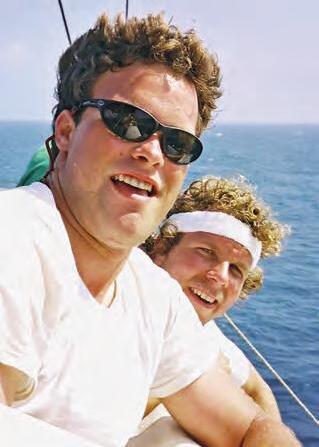

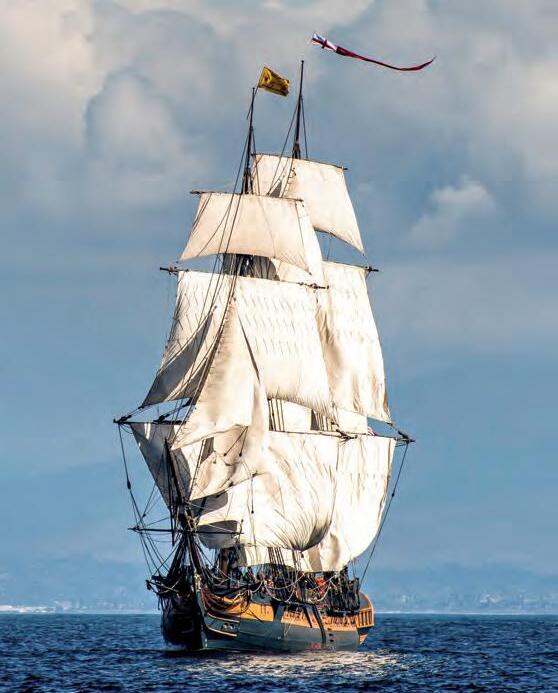

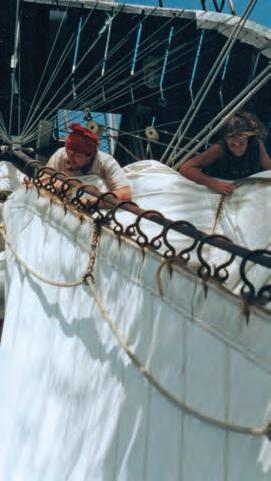
Will Sofrin and I worked together for ten years, teaching a five-day course to MIT students. For the first two and a half days Will would help students draw the lines of a classic Herreshoff design; during the second two and a half days I would help them carve a half model of the same boat. Between classes, and while dining together, Will would often recount his stories from the trip he made on ‘HMS’ Rose, now better known as ‘HMS’ Surprise. I was both an avid and informed listener. When Will told me he was going to write a book, I enthusiastically encouraged his efforts. Over the years since the course ended, we’ve kept in touch, and I’ve been looking forward to reading this book for a long time.
Now that I have had the opportunity, I can say that I was not the least bit disappointed.
While the plot follows the Rose’s voyage from New England to California just after 9/11, All Hands On Deck is really a timeless story. It took me back to my youth on tankers and made me think of many books I have read about young people voyaging. The book reminded me that while the technology and the ships have changed over the centuries, people and the sea have not.
One of my favorite aspects of the book is Will’s unique perspective. He was not the most important person on the boat, and he knew it. He was a carpenter deckhand, and he relates simply what he and his shipmates experienced and what life was like for them on this one-of-a-kind delivery.


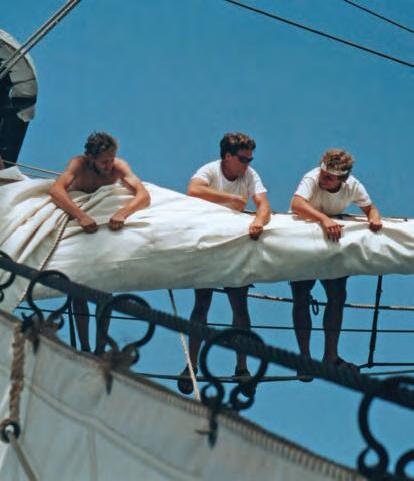

The detailed pictures Will paints of his shipmates wraps their story into his book in such a way that you appreciate the goodness in them, and learn from them as he did. By the voyage’s end, you feel as if you were among them. You learn a little about the culture — and the cult, which Will refers to as “Planet Tall Ship” — of traditional sailing vessels.
One part of sea-going life that has changed for the better since the days
The 5000-mile delivery of ‘HMS’ Rose to the West Coast — complete with carpentry, storms, and romance — yields a classic sea story, 20 years later
of my youth is that a lot more women are involved. As a father of a daughter I would encourage to go wherever she pleased, and as an educator, I find this particularly refreshing. This change also added a romantic element to Will’s book I found a pleasant surprise.
While the book itself is not technical and anyone can understand it, All Hands On Deck does contain some technical drawings; that, after all, is what Will does these days. Never having read Patrick O’Brian or sailed square rigs, I found these enlightening and enjoyable.

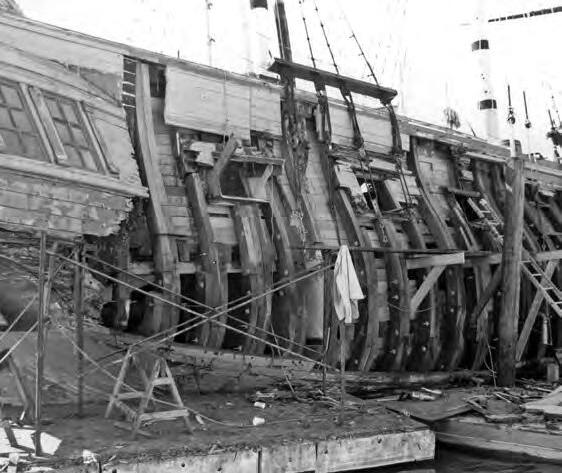
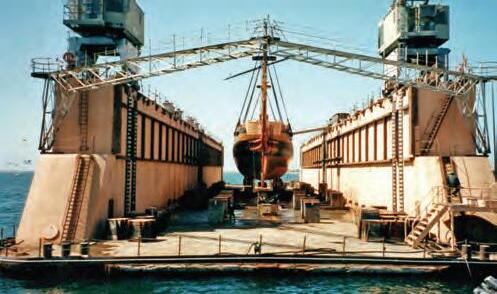
In the end, All Hands On Deck is more about the human experience at sea than it is about square riggers, or O’Brian’s books, or rotten leaky old boats. Whether you come from Planet Tall Ship, or just enjoy sailing, are an armchair sailor, or just like reading interesting stories about the human experience, I highly recommend this book. b
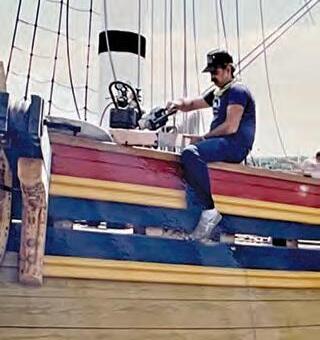


Find out more at http://www.willsofrin.com

Sofrin (with Capt. Richard Bailey, below) was hired as a carpenter. His book features photos of the rebuilds ROSE underwent both before and after the voyage, as well as work that took place along the way to shore up her ailing rig




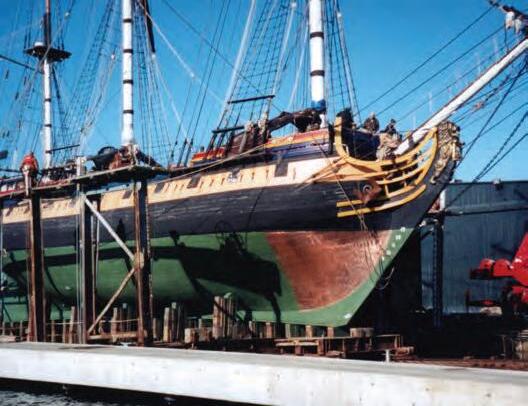
FUEL sent in these gorgeous images from their 2022 programs aboard the topsail schooner SHENANDOAH

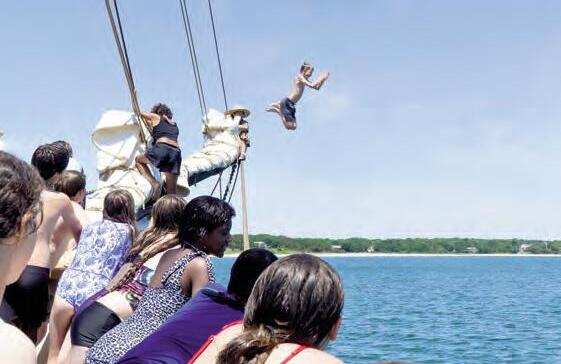
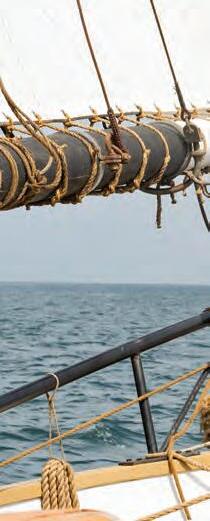
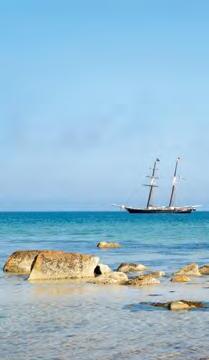
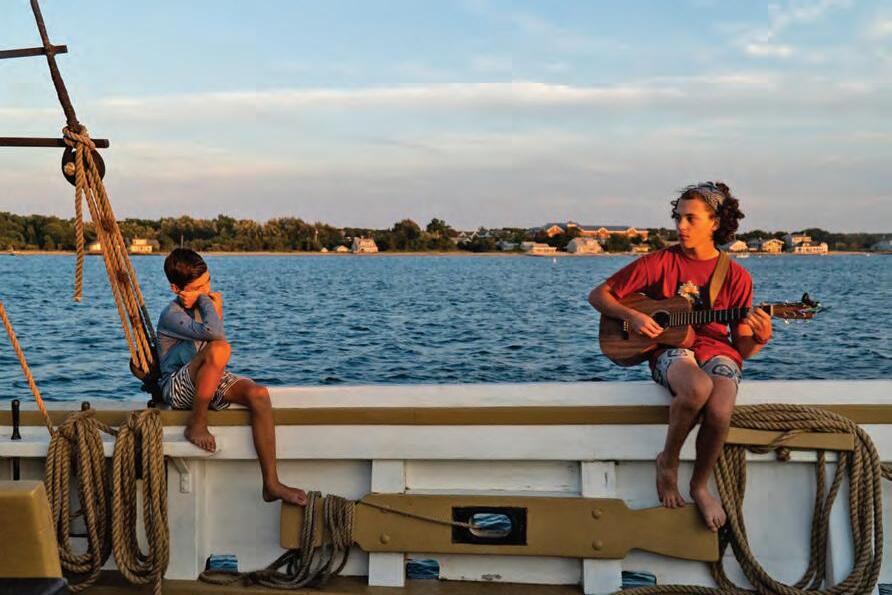



This month, the voters of Provincetown, Massachusetts, will decide whether or not to support the ongoing restoration of the schooner Hindu.

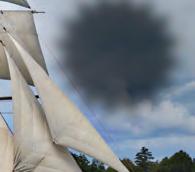
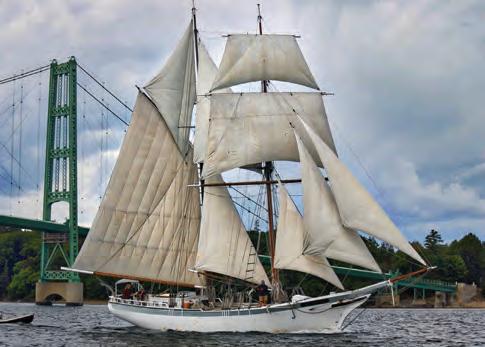
Owners Josh Rowan and Erin Desmond applied for town funding in 2021, but Community Preservation Committee members decided that a for-profit company should not receive funds; that the vessel was not properly validated as historic; and feared that the boat could leave for another port, and the town would be out its money.
Since then, Rowan and Desmond have moved to address these concerns by transferring ownership of Hindu to the nonprofit Sail As You Are. That transfer should be complete by town meeting on April 3, Desmond told the Provincetown Independent in March.
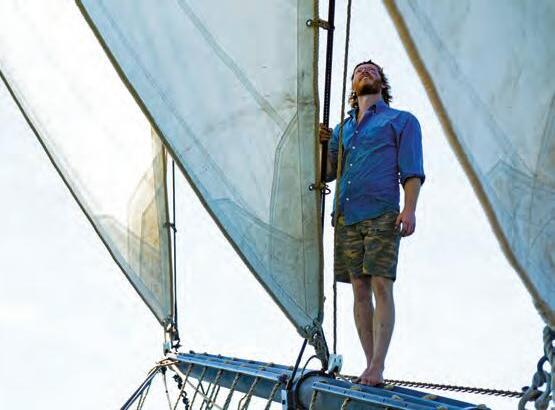

Provincetown’s historical commission also made a first-ever determination last fall that the Hindu had “local historic value” and should be designated a historic vessel.
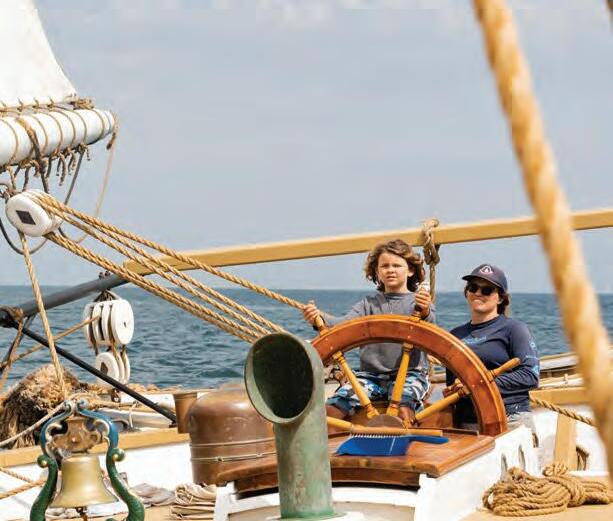

Desmond told the community preservation committee that she would accept various conditions on the grant funding, including a “claw-back clause” that would refund the money if the boat were to leave for another port.
Committee members were initially divided, but eventually voted 7-0, with one abstention, to approve $73,500 for the Hindu with conditions.

Rowan was interviewed about the ongoing rebuild of



Rainy day in Nassau? Check out John Watling’s Distillery right downtown. Their molasses rums are made on site, and there’s a reasonably-priced tasting room. Their products include a sherry-cask-aged rum as well as a powerfully tasty overproof (134) rum. Used in moderation, it’s perfect for your rum punches and Goombay Smashes — this rum will stand out from any blend of fruit juices! — MR

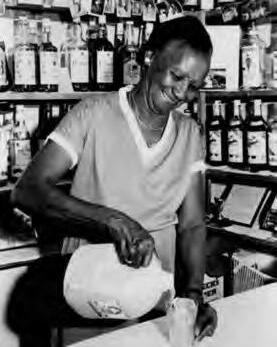
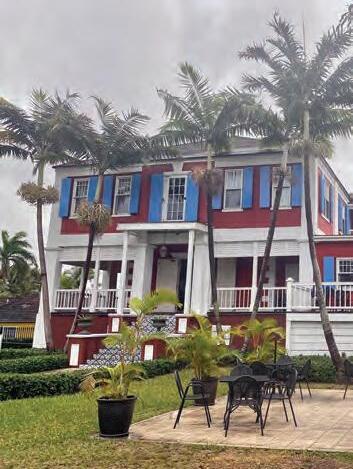

Hindu in our fall issue.
★

The historic port of Gloucester is celebrating its 400th birthday this year, with more schooners than you can shake a stick at.
Maritime Gloucester recently announced the Gloucester Maritime Rendezvous, four days of events celebrating the port’s history and the golden age of fishing, this July 6-9.
“The legacy of the International Dory Races carries on this weekend under the watch of several large and historically significant schooners,” says the press release, and already committed as of March were Bluenose II, Columbia II, Pride of Baltimore II, and of course Gloucester’s own highliner, the 1926 knockabout Adventure
The current Gloucester passenger fleet, comprising the Thomas Lannon, Ardelle, and Isabella, will all be offering special sails to take in the festivities. It would be quite a surprise if Fame and When and If did not poke their heads in, being just 12 miles down the coast in Salem. So there will be plenty of canvas spread that week!
This event is most emphatically NOT replacing the Schooner Festival! The 39th annual Gloucester Schooner Festival starts Thursday, August 31, and concludes with the schooner race on Sunday, September 3.

Although Bluenose II will not return for that event, per its current schedule, the North Shore anticipates getting its first sight of the newly-rebuilt Ernestina-Morrissey under sail, in addition to the dozens of schooners — large, medium, and small — which annually participate.
Inland Seas Education Association (ISEA) expanded its sailing fleet this winter with the purchase of the schooner Alliance
Goombay Smash:
6 tablespoons pineapple juice
1/4 cup orange juice
1/4 cup coconut-flavored rum
4 tablespoons light/gold/amber rum

2 tablespoons dark rum
2 pineapple wedges
2 orange slices
Fill shaker with ice; add juice and rum. Cover and shake until very cold. Garnish with pineapple wedges and orange slices.
— Lisa McDowellJuliana Lisuk, ISEA Associate Director explained, “The demand for ISEA’s unique programs continues to grow, and has exceeded our current capacity of what we can deliver with one ship. The addition of Alliance will allow us to deepen our impact by providing programming to more partners in Detroit, Chicago, Houghton, Green Bay, Cleveland, and other ports around the Great Lakes, while simultaneously having a larger presence throughout the season at our home port in Suttons Bay.”
ISEA’s expansion ultimately reflects a wider recognition of the importance of education in protecting the Great Lakes. Schools, organizations, and members of
the public look to ISEA for this programming, to the point where it could not accommodate all requests with one ship. The addition of another ship will allow ISEA to usher in the next generation of environmental stewards by continuing to connect them in meaningful ways with their watersheds.
The ship’s name will remain Alliance, as it represents ISEA’s partnerships across the Great Lakes. Colleges/universities, nonprofits, K-12 schools, foundations, and other organizations partner with ISEA to develop environmental stewards and leaders to care for the Great Lakes. The addition of Alliance increases the number of partnerships around the Great Lakes Basin that can be served during a sailing season as well as for years to come.
The Alliance will begin the journey back to Suttons Bay in early May. There will be a free public arrival celebration on June 24th as Alliance is escorted into Suttons Bay by Inland Seas.
The Traverse City Record-Eagle reported that the ISEA’s smallest vessel, the schooner Utopia, “which struggles with capacity issues and has a limited passenger license,” will be retired later this year.
The news broke shortly after our winter issue went to press that Götheborg, which was wintering in Barcelona and had planned to set sail for the Far East and eventually China in 2023, will instead sail in the Mediterranean and Northern Europe this summer.
The reason was the strict COVID policies that were still in place in China at the time, “which leaves great uncertainty about whether it will be possible to have visitors on board in Chinese harbours, and the risk of the crew (both professional crew and paying deckhands) on board being put in quarantine,” said a late-November release.
“With only just over three months before we must leave for Asia, and Chinese harbours being an important part of the planned expedition, the lack of manageable parameters to plan and execute a successful expedition has led to this decision.”
The ship’s revised summer schedule now includes six sailing legs: Barcelona to Sète, France, March 17–26; Sète to






Gibraltar, March 26-April 9; Gibraltar to Jersey, April 9May 1; Jersey to Rotterdam, May 1-13; Rotterdam to Hamburg, May 13-22; Hamburg to Gothenburg, May 22June 4.


Lake Superior Tall Ships, Inc., a non-profit organization that operates a youth sail training program out of Bayfield WI, announced that they have added the three-masted schooner Zeeto to their fleet to increase their sail training capacity.
Since 2014, LSTS has been providing positive, lifechanging outdoor sailing adventures for kids and adults aboard the schooner Abbey Road, sailing the Apostle Islands and beyond.
Zeeto, or “long live the king” in Greek, is a 65’ threemasted, bald-headed tern schooner built by Ralph Zimmerman in Sarasota, FL, and launched in 1957. Designed by Howard Chapelle, Zeeto is a replica of the mid-1800s fishing schooners that were common in New England.
Zimmerman cruised to Cuba, the Bahamas, and up the East Coast under two different owners, the second making Boston her home port until 1988. Zeeto was purchased by a dentist from Duluth, MN, who brought her to the Midwest in the early 1990s.
Zeeto moved to Bayfield, WI in 1997 and sailed under the flag of the Apostle Islands Cruise Service fleet.
In 2003, under a new owner, the vessel underwent a major five-year refit. Frames were repaired and replaced, and the original yellow pine strip planked hull was completely cold-molded with marine plywood and epoxy. During this process, great pains were taken to maintain the wood planked look of the original hull.
New Yanmar 3GM engines replaced the old Volvo MD2Bs. The lead & iron ballast keel was removed, painted, weighed and replaced. A new teak deck was added in 2012 and the mizzen mast was replaced in 2015. The interior was refreshed and trimmed with cherry wood.
There are accommodations to sleep six passengers in two
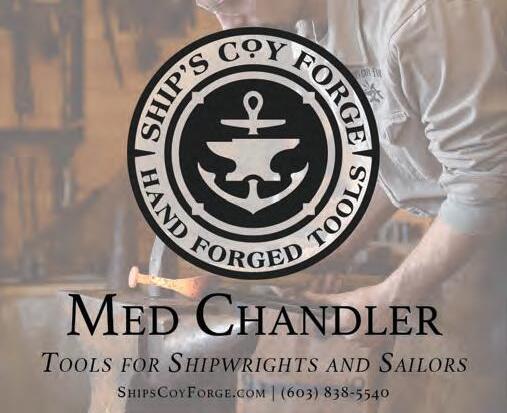
double midship berths, and two singles in forward cabin.
LSTS is excited that the acquisition of Zeeto will allow the organization to offer more “unplugged, experiential learning voyages to families, friends and youth groups.”
A celebration to welcome Zeeto back to Bayfield is being planned to coincide with the Blessing of the Fleet in June.
★
Registration is now open for Living Classrooms’ multiday science, sailing, and adventure programs aboard Sigsbee and Mildred Belle. Programs are for youth aged 12-15.
Chesapeake Bay, help stand watch, learn how to steer the boat, and go trawl fishing. At night, groups will camp ashore and sleep in tents under the stars.


The Sigsbee is offering three- and five-day overnight trips from Baltimore, MD and will visit ports like Rock Hall, Sandy Point, Tilghman Island, and Annapolis. By day, youth will learn to set the sails, steer the boat, go trawl fishing, and explore the maritime history of the Chesapeake Bay. At night, groups will camp ashore.
The Mildred Belle is offering three- and four-day overnight trips and will travel to Washington, DC while visiting ports along the way. During the day, youth will learn about the rich maritime and ecological history of the

“For the last 20 years, Living Classrooms has been running summer overnight programs on Lady Maryland, Sigsbee, and Mildred Belle in partnership with Johns Hopkins University’s Center for Talented Youth (JHU CTY),” explains Program Coordinator Nick Iannacone.
“We were essentially a contractor running the boats for their summer programs. We got to decide some small things, but essentially, they told us what to teach and where to sail. And they found the kids for us and handled all the back-business of med forms, payments, etc.
“The big change is that we are heading out on our own! We decided to take our decades of experience running multi-day overnight programs in the summer and create a new program that we control, top to bottom. I am very excited about this because it gives us the freedom to teach exactly the type of program we want and to deliver that program to the type of kids we want.
Schooner HALIE & MATTHEW
2006, fiberglass hull. Located Maine. COI for 100 on deck, 50 overnight. Asking $1,250,000.

Schooner AMAZING GRACE
58’ LOD ferrocement schooner, built 1991. New engine, rigging, electronics. COI for Lakes Bays & Sounds, 33 + 2. Located San Juan, PR. Asking $450,000.
Schooner MERCANTILE
1916 wooden-hulled schooner in the Maine Windjammer trade. LOD 79', COI for 49, 29 overnight. Brand new sails. Located Camden, ME. Reduced to $350,000. Contact Artisan Boatworks for full listing.
Schooner VICTORY CHIMES
1900 Three-masted Chesapeake Ram schooner, 127’ LOA, wood hull. Located Rockland, ME. Reduced to $295,000. Contact Artisan Boatworks for full listing.
Schooner GRAND NELLIE
1988 steel hull, COI for 48 on deck, 20 overnight. Located Key West, FL. Asking $400,000.
Schooner CAPT. KIDD
55’ steel schooner, 2000. COI for 28. Located Seabrook, TX. Asking $190,000.
Le Reservoir in St. Pierre, Martinique, looks like something right out of Pirates of the Caribbean, complete with free-range chickens and a three-legged dog. The town of St Pierre was destroyed by the eruption of Mt. Pelee in 1902, killing all the residents except a prisoner being held in an underground cell.
The anchorage is little better than a roadstead, but the now-dormant volcano blocks the prevailing easterlies nicely. The Depaz rum distillery is a short (albeit uphill) hike from this lovely, cruiser-friendly town.
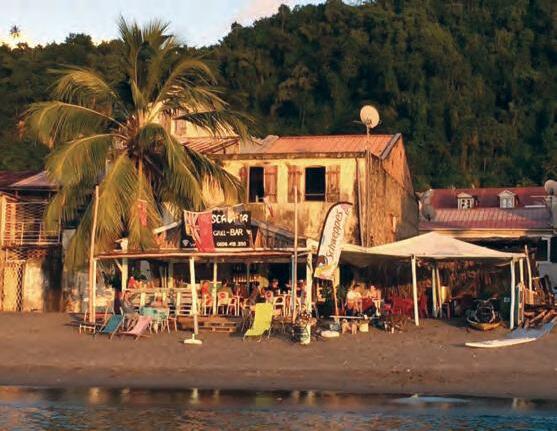
“The JHU CTY Program served mostly international wealthy kids, and I always thought, “I guess it pays the bills...” but I always felt we should really be engaging kids that live in the Chesapeake region. It’s been great teaching kids from Southeast Asia about Chesapeake conservation, but it is going to feel a whole lot more meaningful to engage with youth from Baltimore, DC, Maryland, and Virginia.”
SEA originally announced in November that John “Wiggs” Wigglesworth, W-5, would serve as interim president until a presidential search process was completed. In January, they announced that Wigglesworth would stay on as president.
Wigglesworth is a deeply experienced educator, mariner, SEA veteran, and alumnus (W-5). His 50-year career has been a blend of time with students living and working at sea and time teaching and learning with students in the secondary school classroom.
“John is a beloved figure in SEA circles. He knows our organization well, having served on the faculty, as assistant dean for program development, and as interim dean on two occasions. He served as a trustee and overseer, and most recently as our interim president. He is ready, willing, able to take the helm at this important moment in our history,” said SEA Board Chair Jessica McWade.
“In that context,” McWade continued, “we are hitting the pause button on the overall presidential search process. John will serve as president for two years. We will be using that time to focus hard on core operating issues and setting the stage to resume the presidential search in a year or so.”
SEA celebrated its 50th anniversary last year and continues as the only ocean science and seafaring program of its kind. The anniversary coincides with SEA’s recently completed $24 million Capital Campaign and its much-expanded Woods Hole campus.
Wigglesworth holds master’s degrees from Harvard and Boston University as well as a 1600-ton Ocean Master
Mariners License.
“I look forward to working with the wisdom and experience of our senior management team, faculty, staff and crew to develop the bold ideas and innovations necessary to help direct SEA to a prosperous future,” said Wigglesworth. b
Do you have a newsworthy item for Boats, Bars & Beaches? Contact us at Marlinspike1812@gmail.com.

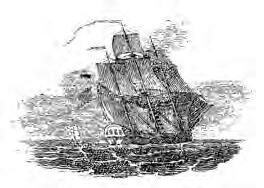

At the Jungle Shipyard in Costa Rica, SAILCARGO INC. continues to work on their flagship Ceiba, a 157’ threemasted topsail schooner.
“Big things are happening at the Costa Rican shipyard where Ceiba is being built. It’s the dry season now which means high winds, low humidity and of course, it hasn’t rained in months. Perfect shipbuilding weather.
“The on-deck galley was installed in its finally position. This building was constructed off and on for the last year. The walls are over 1” thick with sturdy joinery and beautifully-designed supports. It’s an impressive design with almost no right angles anywhere in the construction. The side walls slope while the roof arches. It took a dozen workers to lift the walls up the side of the ship and onto the deck. Check our YouTube channel for videos about this construction.
“In February, the last interior plank was put in. There are hundreds of 5” planks beginning at the bottom of the bilge at the keel and going up the sides, all the way to the top deck. The ship is now entirely closed in except for a couple of specific open areas that allow ventilation.
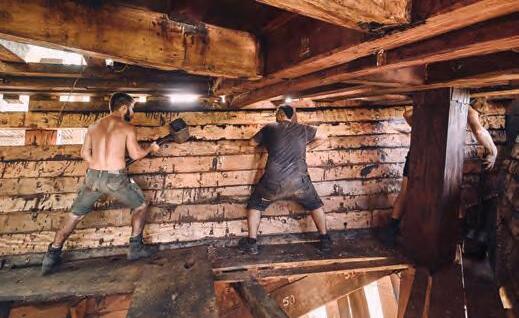
“The planks are fastened with metal spikes and treenails and wedges. We try to use as little steel in the ship as possible. On a six-meter plank, six or seven spikes and about eight treenails are used to fasten the plank to the frames. The planks are of Spanish Cedar (L. Cedrela odorata) which is

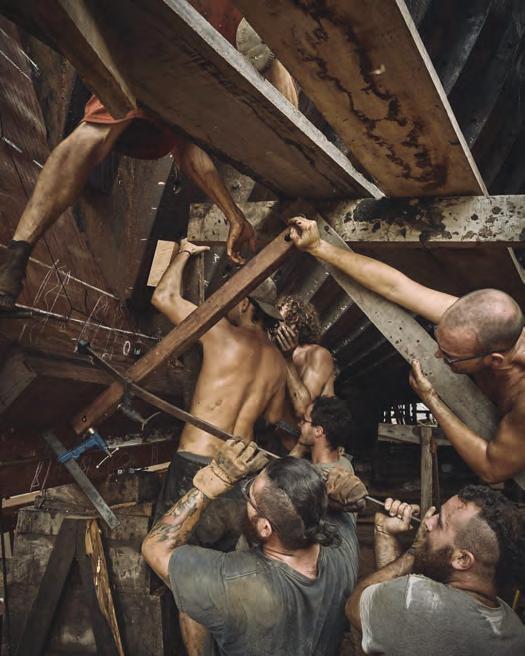

really a type of mahogany and is endemic to Central America.
“In other exciting news the first garboard planks have just been put in! These planks are also 5” thick and are of Pilon (L. Hyeronima alchorneoides). The first two strakes will be a single 5” thick piece, while the rest of the planking will be a double layer of 2” and 3” strakes respectively.
“Vega was delayed in Harlingen, Netherlands due to ongoing negotiations concerning the ship's insurance policy. The cargo refit was completed, and the ship was ready to sail in November 2022. The refit included moving the galley on deck, removing interior cabins and making the ship ready for cargo sailing. We hope that everything will be finalized with the insurance company so that Vega can make the transAtlantic crossing before summer.
“Sailcargo Inc’s mission is to build and operate a fleet of sailing cargo ships. We want to prove that there is sufficient demand for zero-emission cargo shipping by offering competitive solutions for clean shipping. We are entirely funded by private investors who want to be part of the clean shipping movement. Learn more at www.sailcargo.inc.”
H
Ernestina-Morrissey is at long last sailing again! At press time she was off Cape Hatteras, bound down the East Coast to join up with Pride of Baltimore II. The two iconic vessels

plan to continue on together to the Tall Ships Challenge events in the Gulf Coast.

Before Ernestina-Morrissey could get underway, she had to complete her crew, finish up work on her rig and systems, and be certified by the Coast Guard. Her current COI is as a dockside attraction, with plans to expand that when she returns to New England later in the spring.
Ernestina-Morrissey was built in 1894 at the James and Tarr Shipyard in Essex for the Gloucester fishing fleet. Under Captain Bob Bartlett she sailed to within 600 miles of the North Pole, and later served as a packet between the US and the Cape Verdes Islands.
Returned to the US in 1982 as a gift from the newlyindependent Cape Verdean people, she was extensively rebuilt. She was then operated as a sail-training vessel until 2005, at which point structural issues put her out of service.

Eventually, thanks to the generosity of private donors and funding from the Commonwealth of Massachusetts, she was completely rebuilt at the Bristol Marine Shipyard at Boothbay Harbor, Maine. She was finally relaunched on August 30, 2022.
Of course, much work remained to be done. ErnestinaMorrissey conducted her sea trails in Maine waters in early November before heading south to the Massachusetts Maritime Academy. She then continued on to New Bedford, arriving at the end of the month, and celebrated her homecoming with big bash on December 17. She spent the winter in New Bedford at the State Pier.
Denizens of the Gulf Coast can see and board the newly-rebuilt schooner in St Petersburg, FL, from March 30-April 2; in Galveston, TX; from April 13-15; and in Pensacola, FL from April 27-30.
Harold Burnham writes from Essex:
“With our boats laid up for the winter, our apprentices


have been tearing down and learning about diesel engines.
“And now that the public part of the Sylvina Beal necropsy is complete, friends and I continued the process of removing the old to make way for the new. Struggling between tides through knee-deep muck and ice, with wrecking bars and chainsaws, we have made great progress.
“Two mantras have helped us keep our focus through this grueling work. The first is “I love this boat!” The second is a variation of Shelley based on the weather this winter, or lack of it: “If winter never comes, can spring be far behind?”
“At the end of February, Captain Tiffany Krihwan put out word that she and her crew could use some help getting ErnestinaMorrissey ready for her trip to Texas. Along with Amanda Madeira, Willy Bank, and a lot of the old crew, I helped answer her call. While we worked, I remembered the old slogan “Keep Ernestina Sailing!”
and that I had once been outspoken against doing so. Yet here we were, nineteen years and a new hull later, a bunch of like-minded people helping her young crew to bend on sails, move ballast around, and get underway again, literally out of the ashes.
“While there is a lot of love and great hope for the Beal, like Ernestina-Morrissey she will have to be patient. She is not our only boat, nor is she our only project. Jamie and Fred Newhart have hired us to help them with plans for rehabilitating their scow schooner Lily, which they have used in the charter business for many years now out of Stuart, Florida.
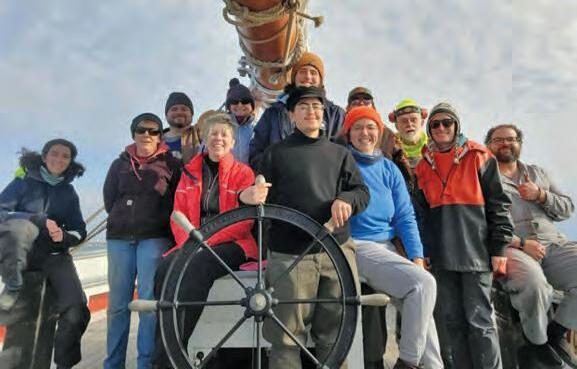
“Given that Lily will be used in warmer climates we are looking at using epoxy and fiberglass-sheathed laminated plywood for the rehabilitation. As we have done in the past, we built a scale construction model in addition to the half model to wrap our heads around exactly what we’re doing. A number of local boatbuilders helped us with the model and design, along with Tom Farrell of Farrell and Norton, who will do the final drawings and submit them to the Coast Guard.
“We’re not yet sure how or where the project will proceed, but will say that it has been wonderful working with customers who know what they want and appreciate what we do.”
H
“Back on December 6,” according to her official blog, “Virginia left her wharf for the first time under her own power. Everything went well except for a small leak along the drive shaft when the propeller was revved up. Virginia was easily able to make six knots on a slack tide, which was our goal for the upcoming trip to Wiscasset. She turned very well, so the huge rudder seems to be the right size. The electronics all worked well.
“On a cold and snowy December 12, Virginia undertook her first voyage on her own engines. She went under the Sagadahoc and Carlton bridges at about 8:00 am, down the Kennebec, past the lighthouses, past the site of the Popham Colony at the mouth of the river, out into the Gulf of Maine, and then up the Sheepscot River to Wiscasset. Arriving at 1:00 pm, we fired one of the guns for the first time from the ship.
“Virginia spent the winter in Wiscasset under the cover of some tarps. The mizzen mast was taken down and a frame erected, which allows workers onto the deck and down below. The tarps are translucent, so it stays light on the deck.

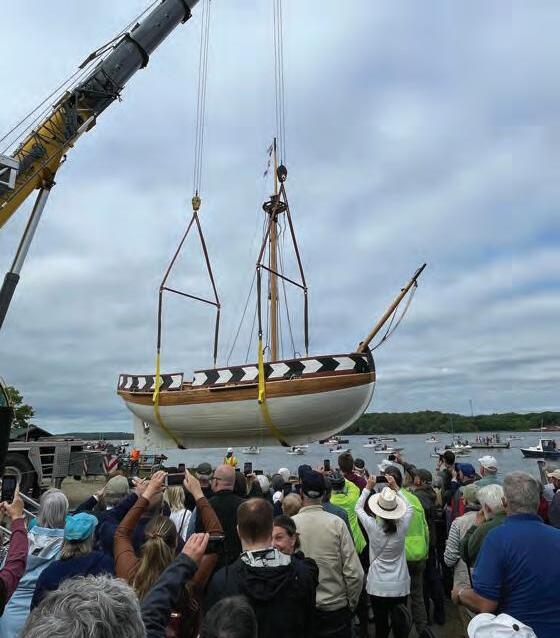
“The main work for the winter is installing plumbing and building the crew quarters, and installing (and hiding) modern electronics.
“The Wiscasset town dock has flooded on the same days as in Bath, but with a lot less current. The pinnace rode out the winter storms fine.” b
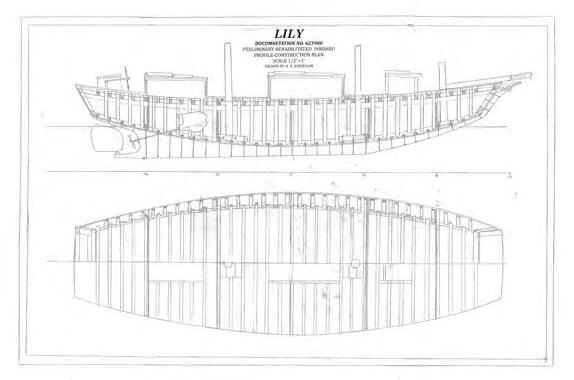

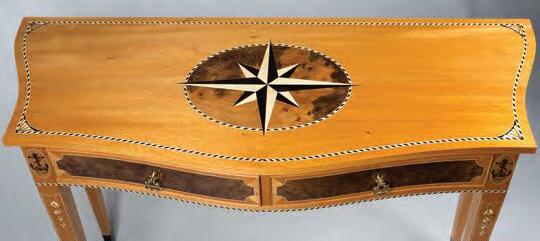
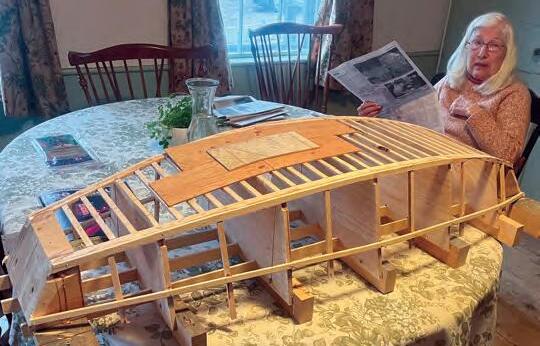
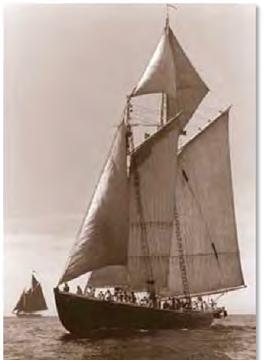
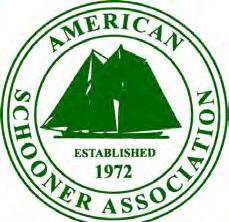
A popular feature on the Marlinspike facebook page is NAME THAT BOAT, where readers are asked to identify tall ships and sail-training vessels of the past & present.
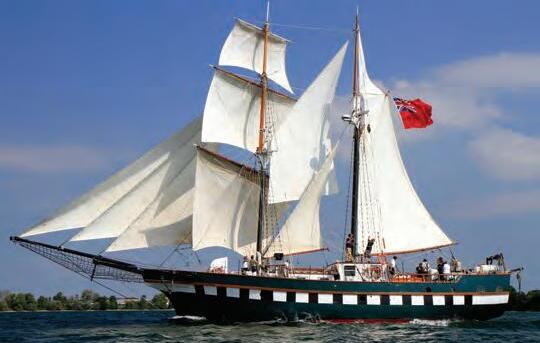
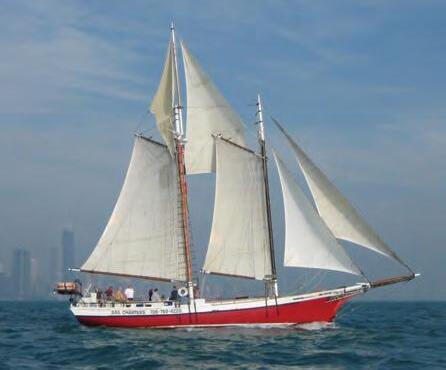
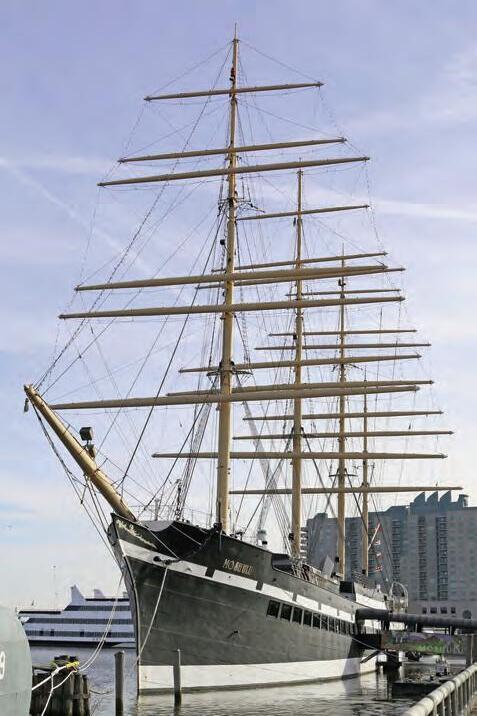

How many of these vessels can you name?
8/9 — Admiral of the Ocean Sea
7/9 — Commodore
6/9 — Captain
5/9 — Master & Commander
4/9 — First Mate
3/9 — Seaman, Able
2/9 — Seaman, Ordinary
1/9 — Swabbie
0/9 — Tourist
ANSWERS: A) San Salvador, B) Moshulu, C) Red Witch, D) Fair Jeanne, E) Sorlandet, F) Picton Castle G) Cory Cramer,
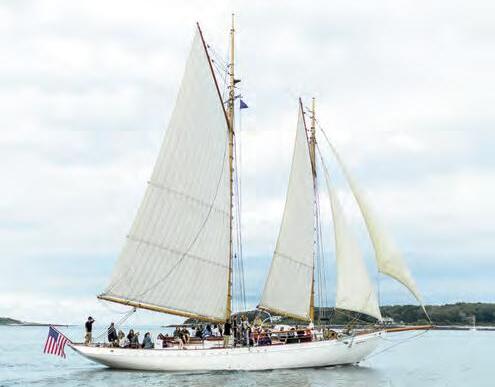

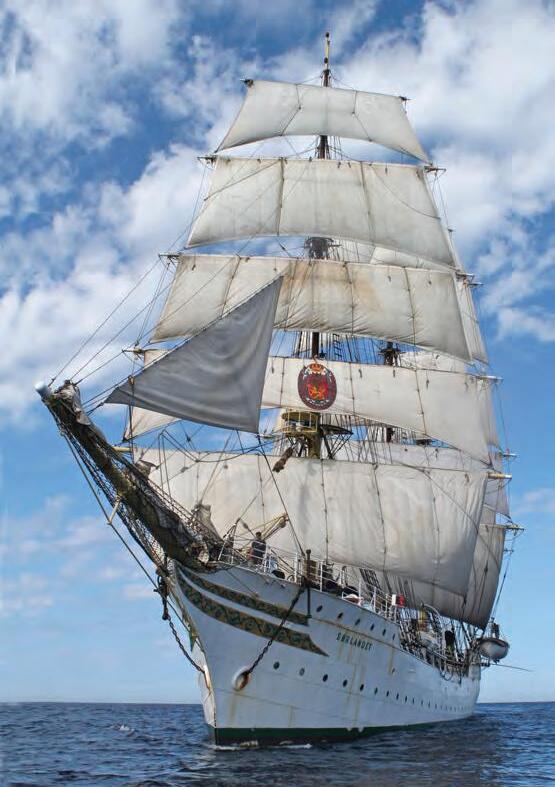

I found this knife in my grandfather’s carpenter’s shop after he had died. It is a rather small knife but has an interesting brass scabbard that at one time was lined with red leather. The crown and fouled anchor are partly cut out and partly etched. Apparently it is circa 1900 and was made in Eskistuna, Sweden by C.W. Dahlgren, as engraved on the blade & scabbard. A similar knife and scabbard, in inferior condition, sold at auction for $2,000. The scabbard is stamped No.12. I have seen it described as a hunting knife, but find the anchor confusing in that regard. Given its value, I do not use it, but have made a strap with a brass anchor fitting so that I can hang it from the sword belt used with my 19th century Royal Navy uniform, worn for living history events.
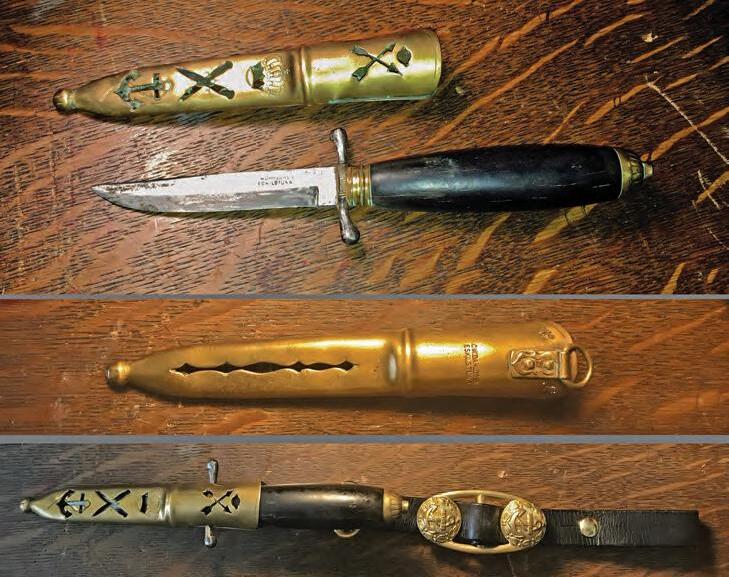 — Tom Welsch
— Tom Welsch
I use this for day sails: a Myerchin folding knife with spike — a full-size spike, just in case. The spike I got at ICON International and I ordered the Myerchin online. The sheath was separate.
 — Ken Bowers
— Ken Bowers
The Tres Hombres done after my crossing with the ship from Lunenburg to Amsterdam in 2016. It was made by Jonas Nyberg at Kosmos Tattoo in Gothenburg.
 — Alexander Anacleto
— Alexander Anacleto
Götheborg! On the same day as my grandson was born with the same initials! These cannon were cast from drawings found in archives. The original Gotheborg foundered and sank on returning to its home port. They were able to salvage much cargo and the guns, which were lost over time. These have a sleeve inserted for electronic firing of the hand-rolled charges. With the carriage, they weigh half a ton each.
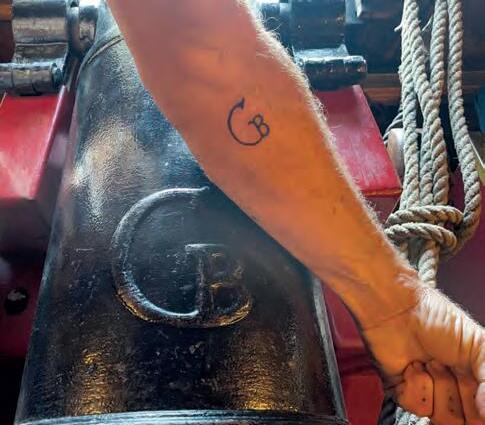 — Mark Galipeau
— Mark Galipeau
My sailing tat. Earned my shellback sailing on Gulden Leeuw in 2017 for Class Afloat. Constellations are what was above me as I crossed the equator. Three red squirrelfish for my official Court of Neptune induction (my nickname is Squirrel). Got to swim with a female whale shark at St. Helena, so that is Helena down at the bottom.
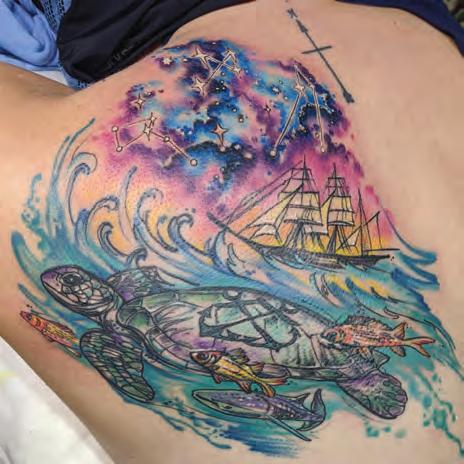
Crossed anchors on the shell represent my trips across the Atlantic and back on Gulden Leeuw, as well as my time as Bosun's Mate on Elissa. Tall ship is Elissa in the Parade of Sail for the first-ever Gulf Coast Tall Ships Challenge Series in 2018. Done by Stina Gray at Mainline Ink in Friendswood, TX.
— Sarah Scibinico